 Search by Keyword
Sign Up Below for our MONTHLY BEATLES TRIVIA QUIZ!
|
 British Reissue picture sleeve
|
"FROM ME TO YOU"
(John Lennon - Paul McCartney)
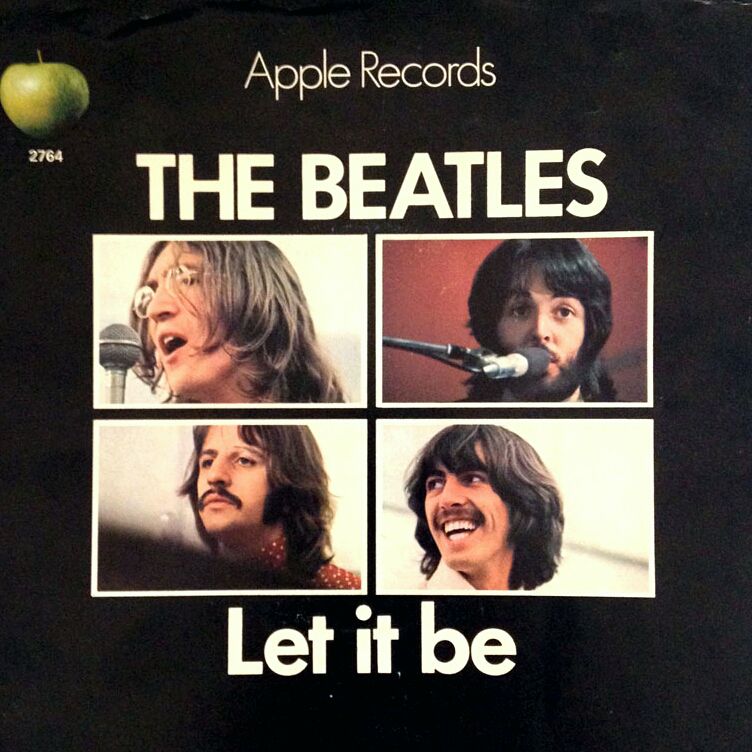 The general rule that can be applied to the chart history of The Beatles music is: "however popular a song was in Britain, it was even more popular in America." This general rule applies almost across the board, spanning from their first British hit "Love Me Do" (#17 UK, #1 US) to "Let It Be" (#2 UK, #1 US). While occasionally the chart position may be slightly lower in the states, such as with "Please Please Me" (#2 UK, #3 US) and "Lady Madonna" (#1 UK, #4 US), American sales figures topped those in their home country because of population alone. The general rule that can be applied to the chart history of The Beatles music is: "however popular a song was in Britain, it was even more popular in America." This general rule applies almost across the board, spanning from their first British hit "Love Me Do" (#17 UK, #1 US) to "Let It Be" (#2 UK, #1 US). While occasionally the chart position may be slightly lower in the states, such as with "Please Please Me" (#2 UK, #3 US) and "Lady Madonna" (#1 UK, #4 US), American sales figures topped those in their home country because of population alone.
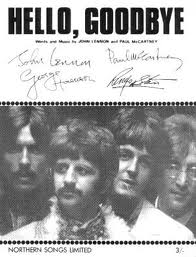 Given that US music fans would purchase anything Beatles related during that time, especially in 1964, the amazing fact remains that one huge British Beatles hit was totally absent on the American Top 40 chart. Their third British single, "From Me To You," was their first bona fide #1 hit in their home country, topping the national charts for an amazing seven weeks, the most weeks at #1 they ever had in Britain (tied only with "Hello Goodbye"). Given that US music fans would purchase anything Beatles related during that time, especially in 1964, the amazing fact remains that one huge British Beatles hit was totally absent on the American Top 40 chart. Their third British single, "From Me To You," was their first bona fide #1 hit in their home country, topping the national charts for an amazing seven weeks, the most weeks at #1 they ever had in Britain (tied only with "Hello Goodbye").
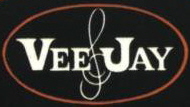 But in America, it only peaked at #116 on the Billboard singles chart when it was released by Vee-Jay Records on May 6, 1963. Then, when Beatlemania took hold in America in early 1964, Vee-Jay made the decision to bury "From Me To You" on the b-side of "Please Please Me" to try capitalizing on their new-found popularity. While the a-side reached #3 on the Billboard Hot 100 (under "She Loves You" and "I Want To Hold Your Hand" on March 21st, 1964), the b-side only reached #41, barely missing the Top 40. But in America, it only peaked at #116 on the Billboard singles chart when it was released by Vee-Jay Records on May 6, 1963. Then, when Beatlemania took hold in America in early 1964, Vee-Jay made the decision to bury "From Me To You" on the b-side of "Please Please Me" to try capitalizing on their new-found popularity. While the a-side reached #3 on the Billboard Hot 100 (under "She Loves You" and "I Want To Hold Your Hand" on March 21st, 1964), the b-side only reached #41, barely missing the Top 40.
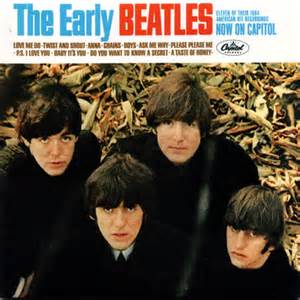 Surprisingly, even though their American label Capitol Records were always scrounging together as many Beatles tracks as they could to fill up additional album releases throughout the '60s, they neglected to issue "From Me To You" on any album. Even when Vee-Jay's contract with The Beatles expired on October 15th, 1964, Capitol still did not include the song on their March 22nd, 1965 release "The Early Beatles." Surprisingly, even though their American label Capitol Records were always scrounging together as many Beatles tracks as they could to fill up additional album releases throughout the '60s, they neglected to issue "From Me To You" on any album. Even when Vee-Jay's contract with The Beatles expired on October 15th, 1964, Capitol still did not include the song on their March 22nd, 1965 release "The Early Beatles."
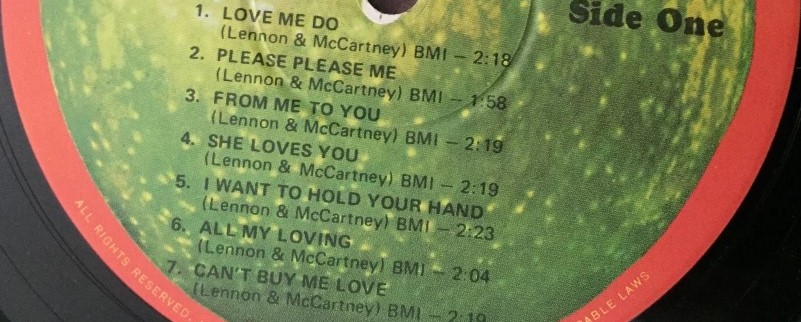 Throughout the '60s, American Beatles enthusiasts were quite unaware of what a pivotal and successful song "From Me To You" was for the group. Their first official British #1 hit was rarely heard on the radio in the US. The song's inclusion on the compilation album "The Beatles - 1962/1966" (aka "The Red Album") on April 2nd, 1973, may have surprised some American record buyers, but they could be grateful that this rare song was finally available again on an American album. Throughout the '60s, American Beatles enthusiasts were quite unaware of what a pivotal and successful song "From Me To You" was for the group. Their first official British #1 hit was rarely heard on the radio in the US. The song's inclusion on the compilation album "The Beatles - 1962/1966" (aka "The Red Album") on April 2nd, 1973, may have surprised some American record buyers, but they could be grateful that this rare song was finally available again on an American album.
Songwriting History
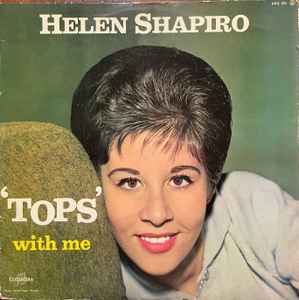 Because of the early success of their second UK single "Please Please Me," The Beatles were privileged to be asked to become part of a British national tour, which began on February 2nd, 1963. They were the bottom of a six-act show which featured teen superstar Helen Shapiro as the headlining act. This month-long tour, which ended on March 3rd, 1963, introduced a more relaxed atmosphere to performing live, since their four-song set list on the tour was extremely less inhibiting than their long hours in Hamburg and at the Cavern Club in Liverpool. Because of the early success of their second UK single "Please Please Me," The Beatles were privileged to be asked to become part of a British national tour, which began on February 2nd, 1963. They were the bottom of a six-act show which featured teen superstar Helen Shapiro as the headlining act. This month-long tour, which ended on March 3rd, 1963, introduced a more relaxed atmosphere to performing live, since their four-song set list on the tour was extremely less inhibiting than their long hours in Hamburg and at the Cavern Club in Liverpool.
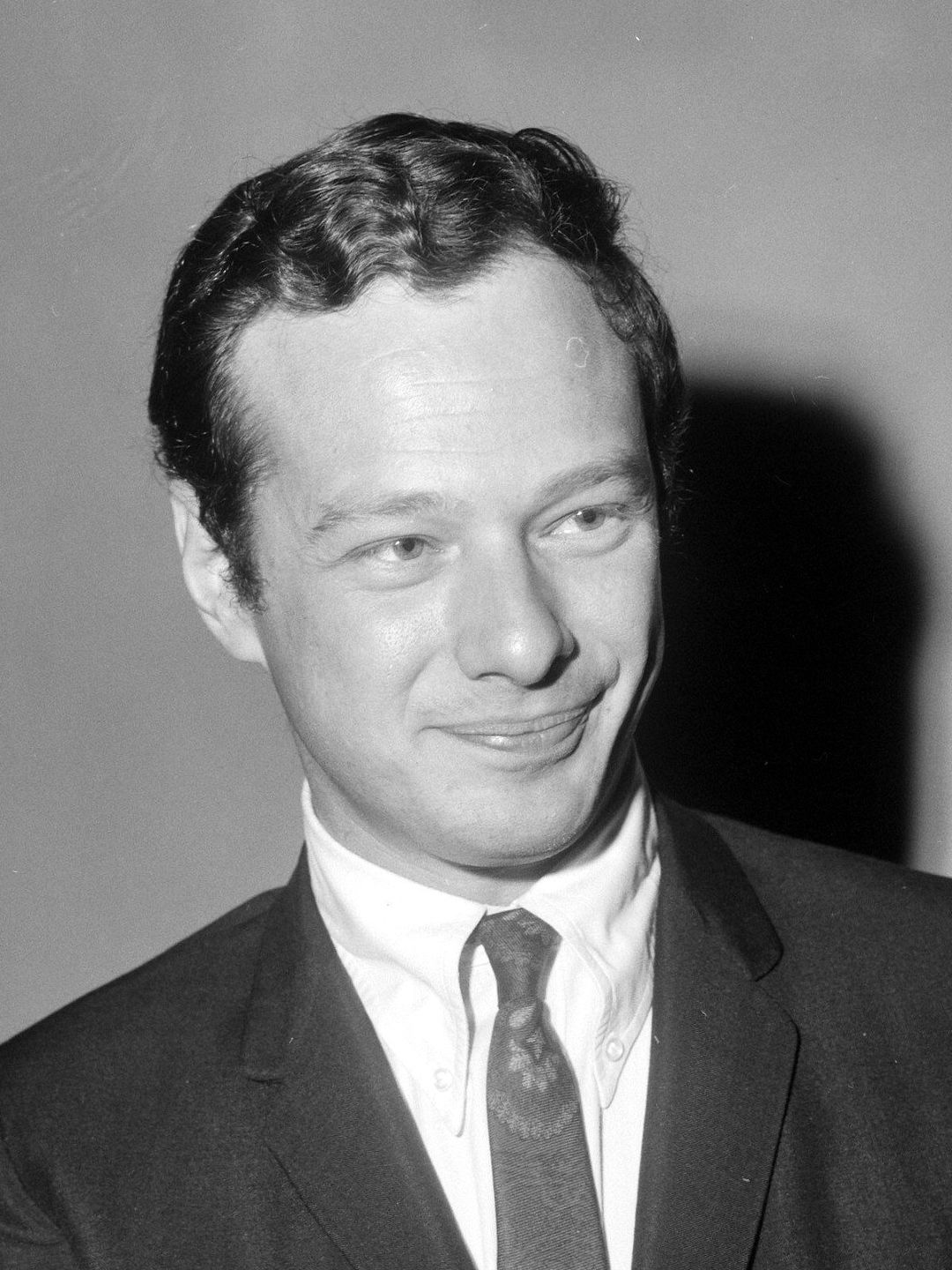 With "Please Please Me" enjoying an impressive ride up the charts, pressure was on George Martin and Brian Epstein for them to produce a follow-up hit for The Beatles, since none of their earlier material appeared suitable. Therefore, on the bus ride from York (where they played on February 27) to Shrewsbury (where they were appearing on February 28) the group took the time to put ideas together for their next single. With "Please Please Me" enjoying an impressive ride up the charts, pressure was on George Martin and Brian Epstein for them to produce a follow-up hit for The Beatles, since none of their earlier material appeared suitable. Therefore, on the bus ride from York (where they played on February 27) to Shrewsbury (where they were appearing on February 28) the group took the time to put ideas together for their next single.
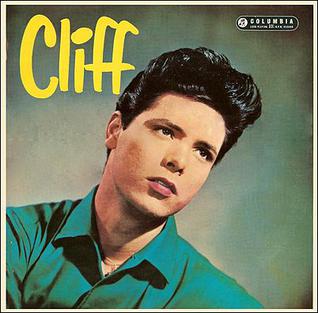 While on the bus, The Beatles happened to be reading the February 22nd issue of the weekly pop newspaper New Musical Express. The "letters" column in the paper was called "From You To Us," which featured a fan letter talking about how Cliff Richard was currently outshining Elvis Presley in the charts. Lennon stated in May of 1963 that Paul and he started to "talk about one of the letters in the column," which led to them putting ideas together for a song inspired by the title of this newspaper column. While on the bus, The Beatles happened to be reading the February 22nd issue of the weekly pop newspaper New Musical Express. The "letters" column in the paper was called "From You To Us," which featured a fan letter talking about how Cliff Richard was currently outshining Elvis Presley in the charts. Lennon stated in May of 1963 that Paul and he started to "talk about one of the letters in the column," which led to them putting ideas together for a song inspired by the title of this newspaper column.
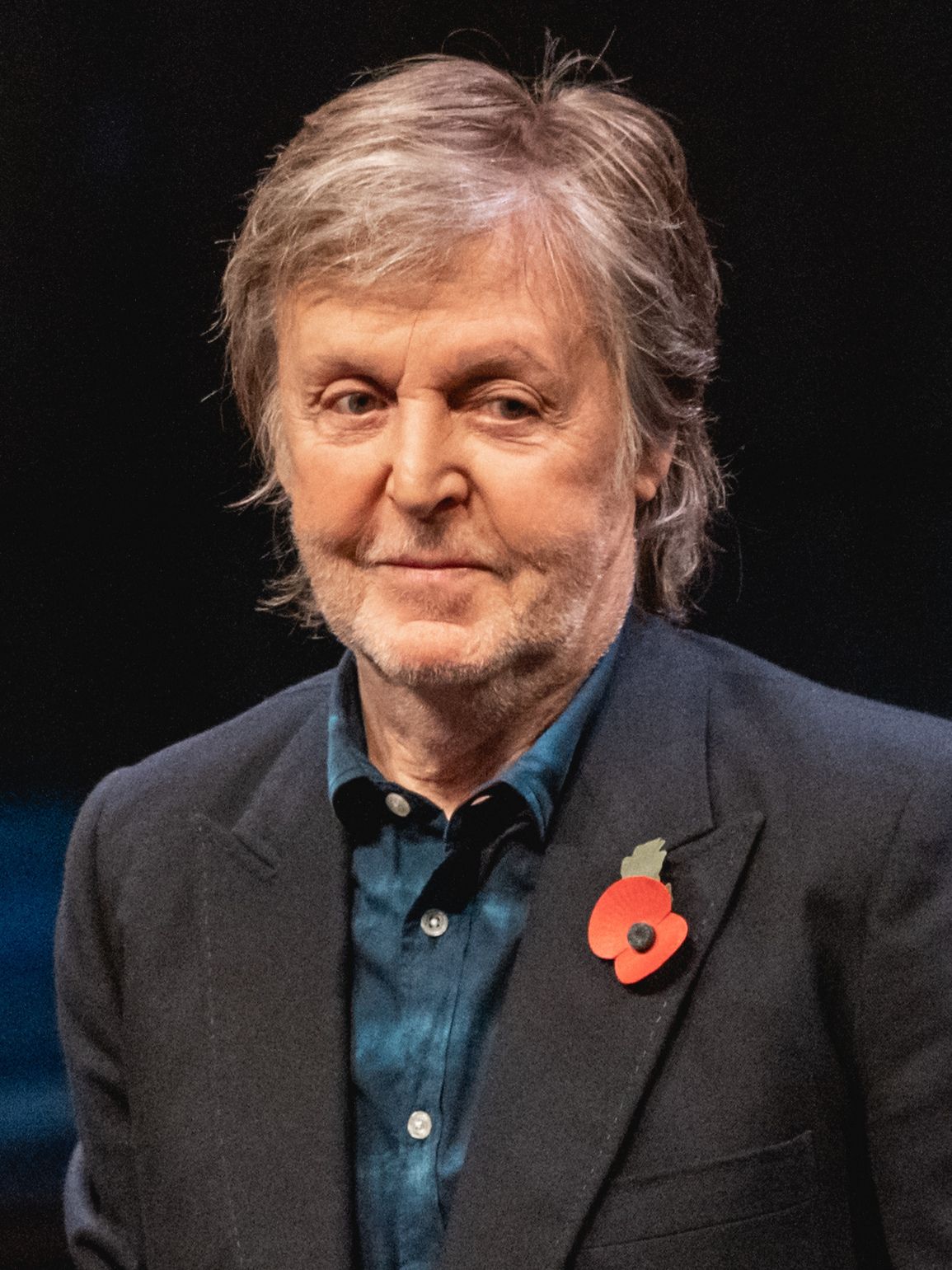 It should be mentioned here that, despite Paul's recollections in his 2021 book "The Lyrics" that their song "From Me To You" was written during their Roy Orbison tour that stretched from May 18th through June 9th, 1963, his memories were incorrect being that the song was already released in the UK on April 11th, 1963. Nonetheless, these memories could easily be applied to their Helen Shapiro tour, which stretched from February 2nd to March 3rd of that year. It should be mentioned here that, despite Paul's recollections in his 2021 book "The Lyrics" that their song "From Me To You" was written during their Roy Orbison tour that stretched from May 18th through June 9th, 1963, his memories were incorrect being that the song was already released in the UK on April 11th, 1963. Nonetheless, these memories could easily be applied to their Helen Shapiro tour, which stretched from February 2nd to March 3rd of that year.
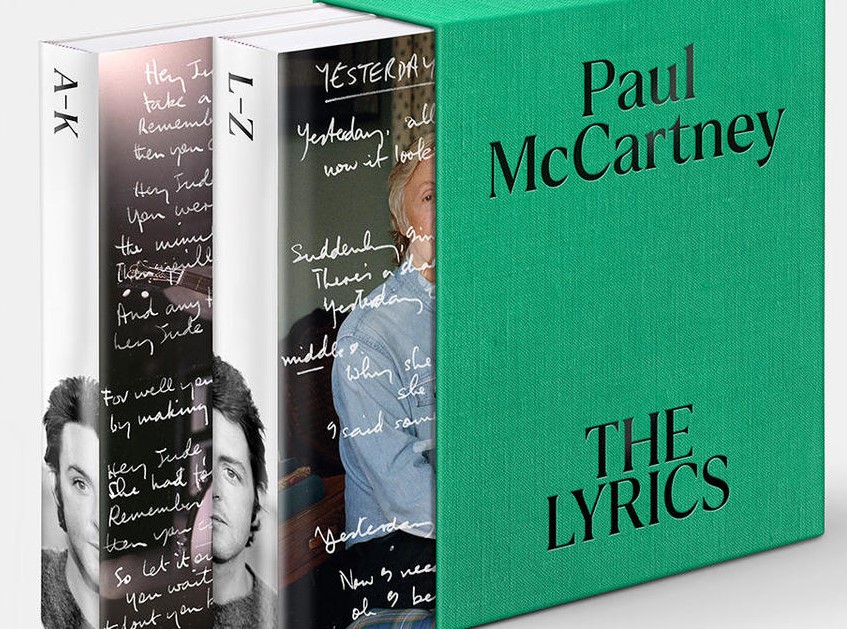 "We were all on the same tour bus," McCartney explained in his book "The Lyrics," continuing, "and it would stop somewhere so that people could go for a cup of tea and a meal, and John and I would have a cup of tea and then go back to the bus and write something...There was a camraderie, and we were inspiring each other, which is always a lovely thing. We'd always had basic chords. If you were in C, it would be C, A minor, F and G; those would be the chords, and you didn't really vary them; you didn't need to, because there were so many permutations that you could write lot of songs and they'd all sound quite different, just by shifting the sequence. It's endlessly fascinating. But in this song, when we go to the middle eight - 'I've got arms that long to hold you' - that chord moves out of the C, A minor, F, G sequence and into G minor. After writing that, I remember thinking, 'Now we're getting somewhere." "We were all on the same tour bus," McCartney explained in his book "The Lyrics," continuing, "and it would stop somewhere so that people could go for a cup of tea and a meal, and John and I would have a cup of tea and then go back to the bus and write something...There was a camraderie, and we were inspiring each other, which is always a lovely thing. We'd always had basic chords. If you were in C, it would be C, A minor, F and G; those would be the chords, and you didn't really vary them; you didn't need to, because there were so many permutations that you could write lot of songs and they'd all sound quite different, just by shifting the sequence. It's endlessly fascinating. But in this song, when we go to the middle eight - 'I've got arms that long to hold you' - that chord moves out of the C, A minor, F, G sequence and into G minor. After writing that, I remember thinking, 'Now we're getting somewhere."
 The bridge of the song (or 'middle-eight' as they usually called it) was something that Paul was quite proud of. In his 1997 book "Many Years From Now," he stated: "The thing I liked about 'From Me To You' was it had a very complete middle. It went to a surprising place. The opening chord of the middle section of that song heralded a new batch for me. That was a pivotal song. Our songwriting lifted a little with that song." The bridge of the song (or 'middle-eight' as they usually called it) was something that Paul was quite proud of. In his 1997 book "Many Years From Now," he stated: "The thing I liked about 'From Me To You' was it had a very complete middle. It went to a surprising place. The opening chord of the middle section of that song heralded a new batch for me. That was a pivotal song. Our songwriting lifted a little with that song."
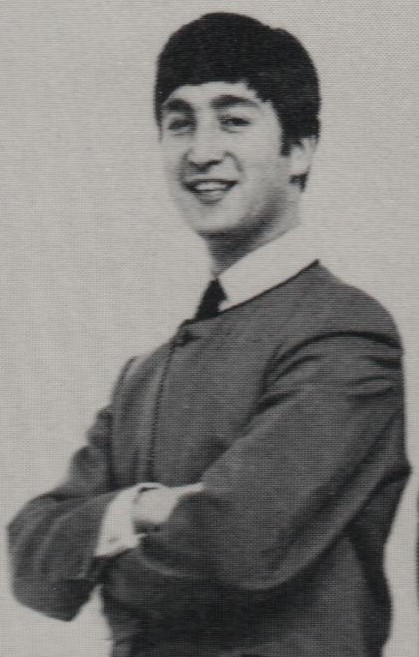 "We were just fooling about on the guitar," Lennon stated in April of 1963. "This went on for a while. Then we began to get a good melody line and we really started to work at it. Before the journey was over we'd completed the lyric, everything." In 1964, John added concerning the lyrics and song title: "The words weren't really all that difficult - especially as we had decided quite definitely not to do anything that was at all complicated. I suppose that is why we often had the words "you" and "me" in the titles of our songs. It's the kind of thing that helps the listeners to identify with the lyrics. We think this is very important. The fans like to feel that they are part of something that is being done by the performers." "We were just fooling about on the guitar," Lennon stated in April of 1963. "This went on for a while. Then we began to get a good melody line and we really started to work at it. Before the journey was over we'd completed the lyric, everything." In 1964, John added concerning the lyrics and song title: "The words weren't really all that difficult - especially as we had decided quite definitely not to do anything that was at all complicated. I suppose that is why we often had the words "you" and "me" in the titles of our songs. It's the kind of thing that helps the listeners to identify with the lyrics. We think this is very important. The fans like to feel that they are part of something that is being done by the performers."
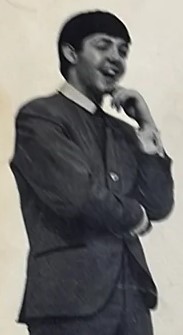 Being that this song was written primarily for their upcoming single, this was one of the only times in the songwriting career of Lennon / McCartney's that they wrote the song completely from scratch, rather than from an idea that one of them brought forward for the other to finish. Therefore, once they completed a melody line, they traded off lines, one from the other. "I think the first line was mine," Lennon remembered in 1980, "I mean, I know it was mine...and then after that, we just took it from there." Being that this song was written primarily for their upcoming single, this was one of the only times in the songwriting career of Lennon / McCartney's that they wrote the song completely from scratch, rather than from an idea that one of them brought forward for the other to finish. Therefore, once they completed a melody line, they traded off lines, one from the other. "I think the first line was mine," Lennon remembered in 1980, "I mean, I know it was mine...and then after that, we just took it from there."
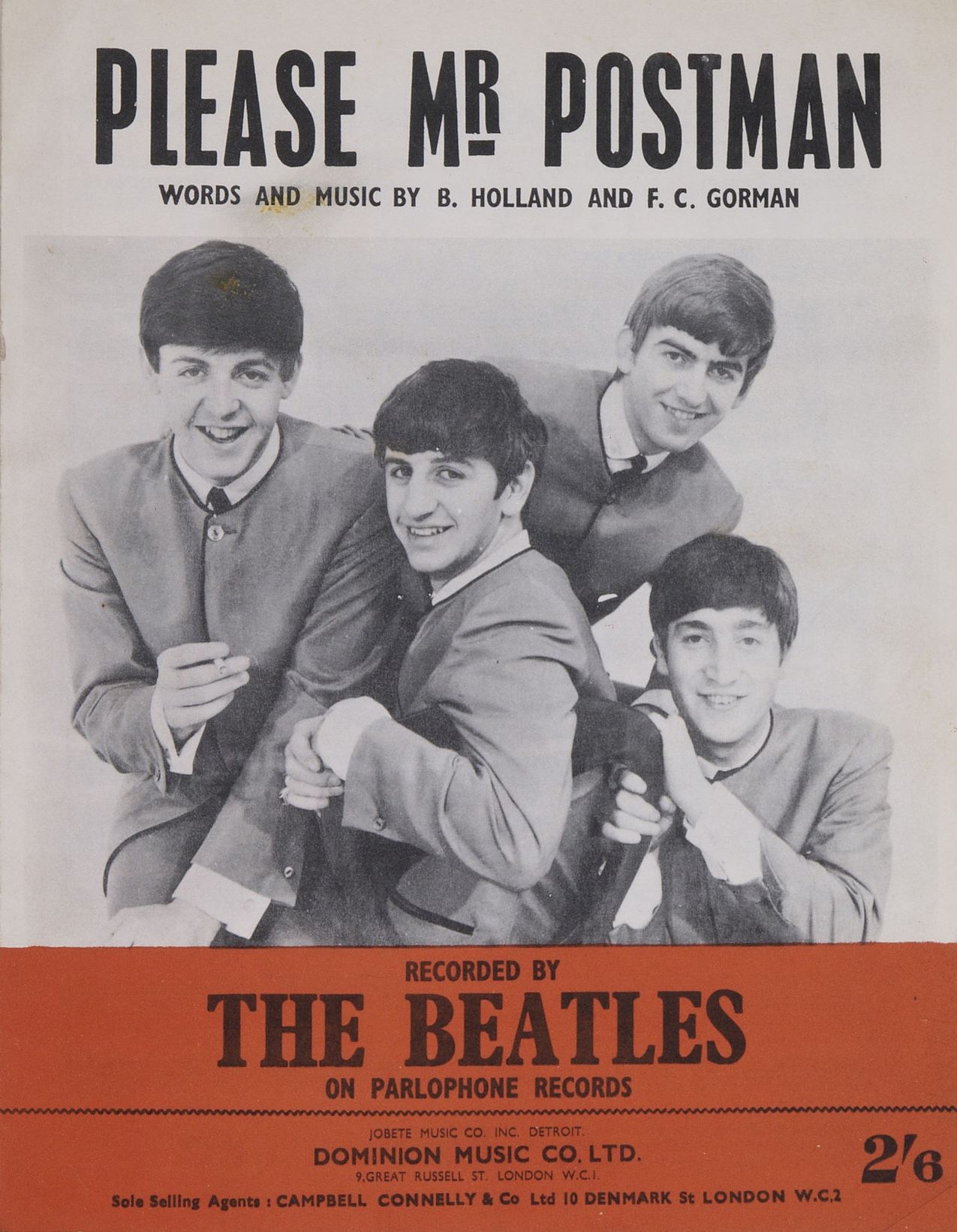 We used every trick in the book," Paul expalins about the writing and recording of the song in his 2021 book "The Lyrics." "There was a catch sing-along intro; you didn't even have to know the words and you could sing along with that. We were fore-grounding the sound of John's harmonica on these songs. It had been on 'Love Me Do,' and now it was on 'From Me To You.' The idea of sending a letter was always a big thing in rock and roll. Just think 'Please Mister Postman' and 'Return To Sender."" We used every trick in the book," Paul expalins about the writing and recording of the song in his 2021 book "The Lyrics." "There was a catch sing-along intro; you didn't even have to know the words and you could sing along with that. We were fore-grounding the sound of John's harmonica on these songs. It had been on 'Love Me Do,' and now it was on 'From Me To You.' The idea of sending a letter was always a big thing in rock and roll. Just think 'Please Mister Postman' and 'Return To Sender.""
For purists who need to know who wrote what in the Lennon / McCartney catalog, both John and Paul have spoke of "From Me To You" being a 50/50 collaboration. "It was very much co-written," Paul explained in his book "Many Years From Now."
 The style of the song, Paul explained back in 1964, came from "an old Ragtime tune...especially the middle-eight." Lennon had a different opinion. "It was far bluesier than that when we wrote it," John explained. "The notes today - you could re-arrange it pretty funky...we nearly didn't record it because we thought it was too bluesy at first, but when we'd finished it and George Martin had scored it with harmonica, it was alright." The style of the song, Paul explained back in 1964, came from "an old Ragtime tune...especially the middle-eight." Lennon had a different opinion. "It was far bluesier than that when we wrote it," John explained. "The notes today - you could re-arrange it pretty funky...we nearly didn't record it because we thought it was too bluesy at first, but when we'd finished it and George Martin had scored it with harmonica, it was alright."
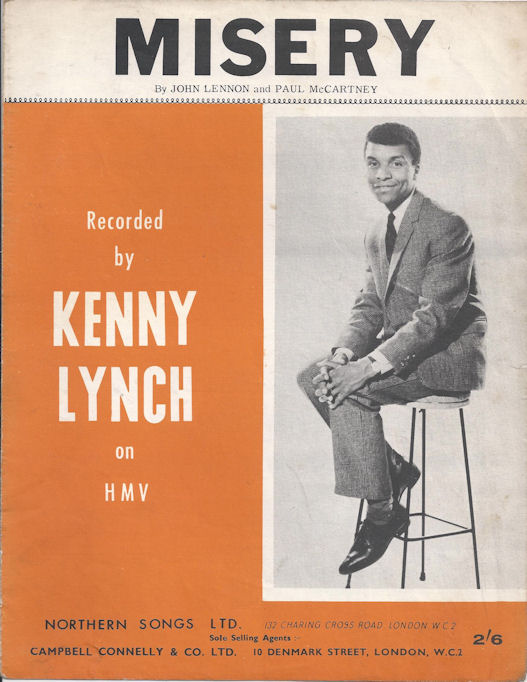 One gimmick that they inserted into the song, like many others, was the falsetto "oooh" in imitation of The Isley Brothers' hit "Twist And Shout." While on the bus, Kenny Lynch (who was also on the bill for that tour) heard them rehearsing the song. "You can't do that," he remarked concerning the falsetto part, "you sound like a bunch of fairies." They replied, "It's OK. The kids will like it," so they stood their ground whenever they were convinced they were right. Kenny Lynch did quite like their song "Misery" which was introduced to him during this tour. He liked it enough to record and release it as a single himself, becoming the first artist to release a Lennon / McCartney cover song. One gimmick that they inserted into the song, like many others, was the falsetto "oooh" in imitation of The Isley Brothers' hit "Twist And Shout." While on the bus, Kenny Lynch (who was also on the bill for that tour) heard them rehearsing the song. "You can't do that," he remarked concerning the falsetto part, "you sound like a bunch of fairies." They replied, "It's OK. The kids will like it," so they stood their ground whenever they were convinced they were right. Kenny Lynch did quite like their song "Misery" which was introduced to him during this tour. He liked it enough to record and release it as a single himself, becoming the first artist to release a Lennon / McCartney cover song.
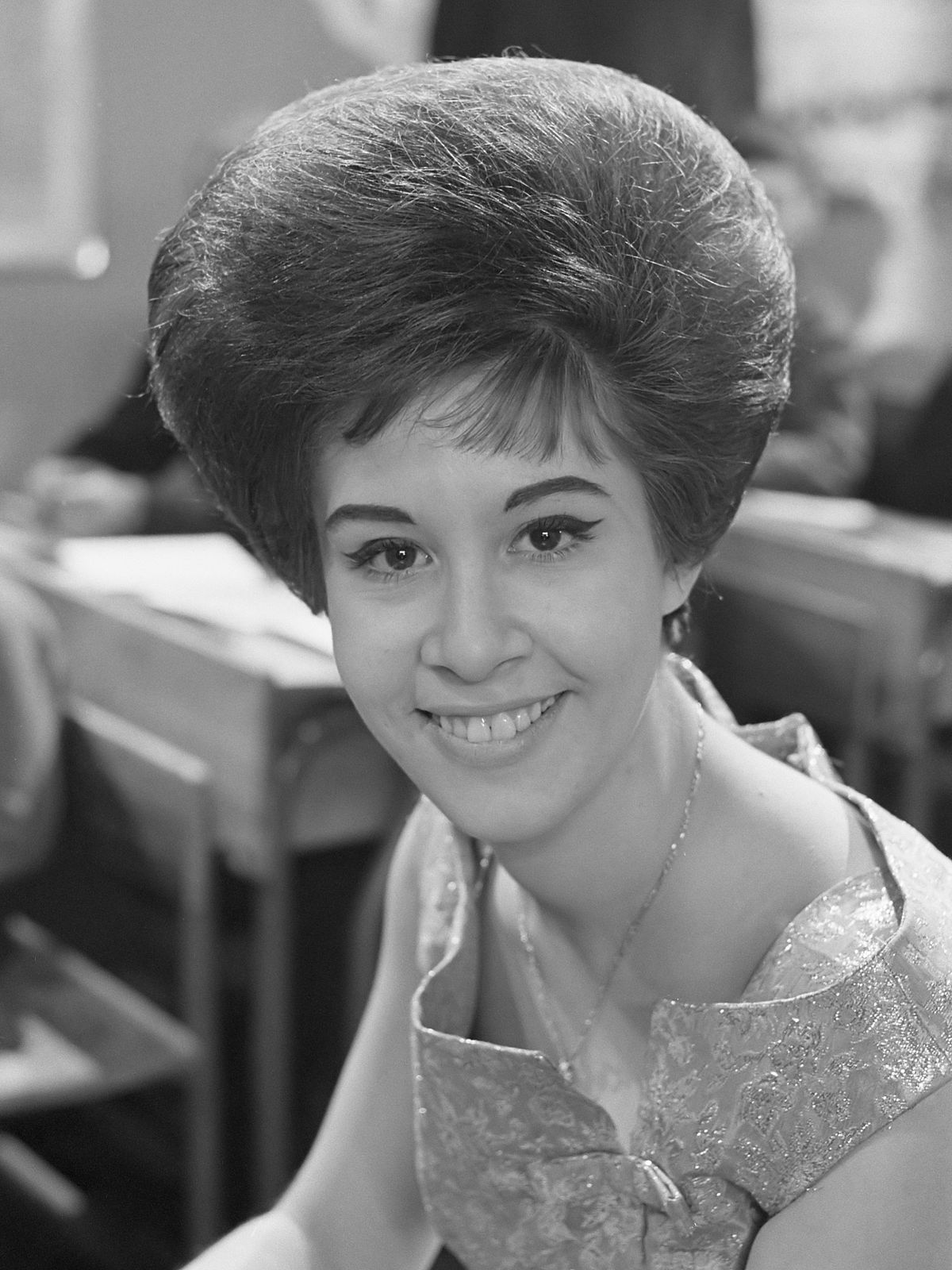 Helen Shapiro also has memories concerning the writing of "From Me To You." Once the bus got to Shrewsbury on that day, "they asked me if I would come and listen to two songs that they had," Helen Shapiro remembers. "Paul sat at the piano and John stood next to me and they sang 'From Me To You' and 'Thank You Girl.' They said they sort of knew their favorite but hadn't finally decided. They wanted me to tell them which one I thought would make the best a-side. As it happened I liked 'From Me To You' and they said, 'Great. That's the one we like.'" Helen Shapiro also has memories concerning the writing of "From Me To You." Once the bus got to Shrewsbury on that day, "they asked me if I would come and listen to two songs that they had," Helen Shapiro remembers. "Paul sat at the piano and John stood next to me and they sang 'From Me To You' and 'Thank You Girl.' They said they sort of knew their favorite but hadn't finally decided. They wanted me to tell them which one I thought would make the best a-side. As it happened I liked 'From Me To You' and they said, 'Great. That's the one we like.'"
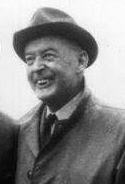 The next day, March 1, 1963, the tour moved on to the Odeon Cinema in Southport, Lancashire, which was the closest they would get to Liverpool during the tour. While there, they were able to visit Paul's father, Jim McCartney, to get his opinion of the new song as well. Being that Paul's father had been a semi-professional musician, they wanted his input about the chords and melody line they wrote for the song, because they thought it was "a bit on the complicated side" and that maybe "it wouldn't catch on with the fans." He assured them it would work just fine, calling the song "a nice little tune." The next day, March 1, 1963, the tour moved on to the Odeon Cinema in Southport, Lancashire, which was the closest they would get to Liverpool during the tour. While there, they were able to visit Paul's father, Jim McCartney, to get his opinion of the new song as well. Being that Paul's father had been a semi-professional musician, they wanted his input about the chords and melody line they wrote for the song, because they thought it was "a bit on the complicated side" and that maybe "it wouldn't catch on with the fans." He assured them it would work just fine, calling the song "a nice little tune."
Recording History
On March 5th, 1963, five days after the song was written, The Beatles went into EMI Studio Two, where a three hour afternoon session, from 2:30 to 5:30 pm, was scheduled to record both sides of their new single.
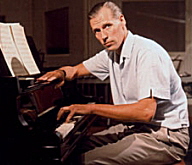 Before the session began, they went to the EMI canteen to enjoy some tea with George Martin (and have some pictures taken). Then they went into the studio to introduce “From Me To You” to George Martin for the first time. “I used to sit on my high stool in the studio and the boys would play me what they had brought in to record,” George Martin explains. “I’d listen to the basic idea of the song, perhaps on an acoustic guitar, and I’d help to decide on the structure of the introduction, where the solo should go, the ending and the final length of the song – never longer than 2:45 otherwise we wouldn’t get it on the radio!” Before the session began, they went to the EMI canteen to enjoy some tea with George Martin (and have some pictures taken). Then they went into the studio to introduce “From Me To You” to George Martin for the first time. “I used to sit on my high stool in the studio and the boys would play me what they had brought in to record,” George Martin explains. “I’d listen to the basic idea of the song, perhaps on an acoustic guitar, and I’d help to decide on the structure of the introduction, where the solo should go, the ending and the final length of the song – never longer than 2:45 otherwise we wouldn’t get it on the radio!”
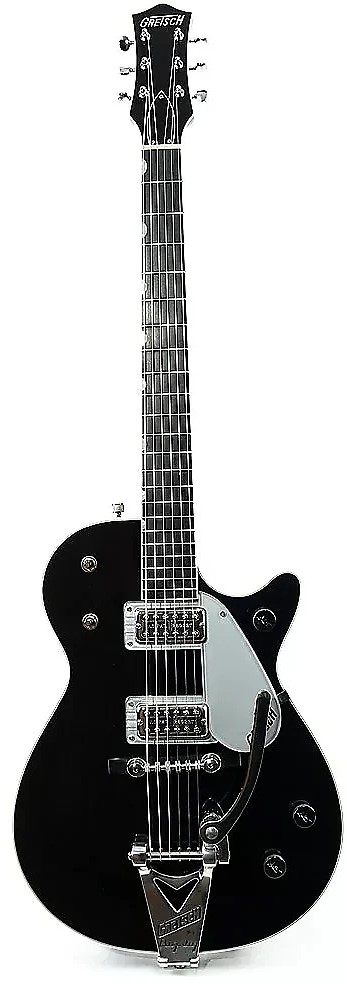 The group then commenced recording "From Me To You" live (vocals, instruments and all) but without the unison vocals and harmonica introduction as we’re used to hearing it. "Take one" displays how the lead guitar work of George Harrison is the stand out instrument in the introduction – in fact, George even partially reprises the intro at the end of the first verse. The tempo is somewhat dragging on this first take, another oddity being that either John or Paul sings “so call on me” instead of “just call on me” during the second verse. Suddenly, however, toward the end of the third verse, somebody whistled which was interpreted by The Beatles as an indication from George Martin to bring the song to a halt. McCartney asked, “What happened,” which brought George Martin's reply, “What do you mean ‘what happened’?” “I just thought I heard you talking, actually,” Paul fires back. Both John and Paul exclaim that they heard someone whistle, but nobody appears to have ‘fessed up’ to who the whistler was. The point being moot, they got ready to begin the second take. The group then commenced recording "From Me To You" live (vocals, instruments and all) but without the unison vocals and harmonica introduction as we’re used to hearing it. "Take one" displays how the lead guitar work of George Harrison is the stand out instrument in the introduction – in fact, George even partially reprises the intro at the end of the first verse. The tempo is somewhat dragging on this first take, another oddity being that either John or Paul sings “so call on me” instead of “just call on me” during the second verse. Suddenly, however, toward the end of the third verse, somebody whistled which was interpreted by The Beatles as an indication from George Martin to bring the song to a halt. McCartney asked, “What happened,” which brought George Martin's reply, “What do you mean ‘what happened’?” “I just thought I heard you talking, actually,” Paul fires back. Both John and Paul exclaim that they heard someone whistle, but nobody appears to have ‘fessed up’ to who the whistler was. The point being moot, they got ready to begin the second take.
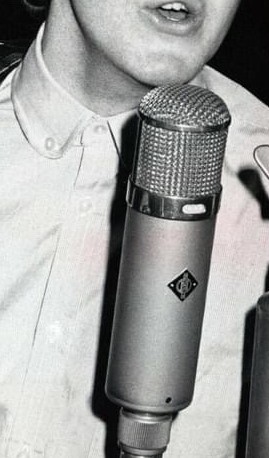 "Take two" made it all the way through to the song's conclusion, however the big difference here is that they had yet to include an instrumental section to the arrangement of the song. Therefore, the third verse immediately segues into the second bridge. We also see that the vocalists still haven’t sorted out whether to sing “so” or “just” in the second verse. There also seems to be a little bit of awkwardness to Ringo’s drumming at the conclusion of the song, which prompts McCartney to say, “ah, ah, ah, you missed the ending.” Obviously more things needed to be ironed out. "Take two" made it all the way through to the song's conclusion, however the big difference here is that they had yet to include an instrumental section to the arrangement of the song. Therefore, the third verse immediately segues into the second bridge. We also see that the vocalists still haven’t sorted out whether to sing “so” or “just” in the second verse. There also seems to be a little bit of awkwardness to Ringo’s drumming at the conclusion of the song, which prompts McCartney to say, “ah, ah, ah, you missed the ending.” Obviously more things needed to be ironed out.
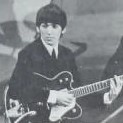 "Take three" begins with Lennon suggesting, “Let’s speed it up a little bit,” and then with a countdown, another full take is recorded. George picks a couple of lower notes to play in between the first two verses this time around, but the instrumental section is still not in place and the vocalists are still mixing up the “so” and “just” word in the second verse. Ringo gets somewhat closer to performing his accents correctly in the conclusion, but he’s still not quite there yet. "Take three" begins with Lennon suggesting, “Let’s speed it up a little bit,” and then with a countdown, another full take is recorded. George picks a couple of lower notes to play in between the first two verses this time around, but the instrumental section is still not in place and the vocalists are still mixing up the “so” and “just” word in the second verse. Ringo gets somewhat closer to performing his accents correctly in the conclusion, but he’s still not quite there yet.
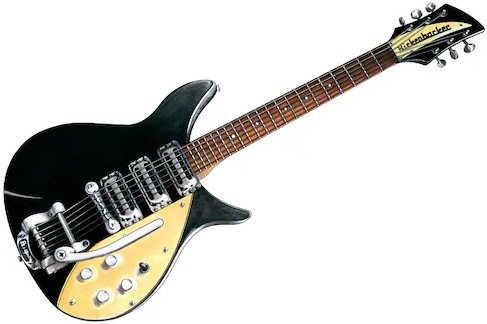 Thinking that they had already nailed it, Lennon begins "take four" with the statement, “Well, we can’t get it much closer.” But, in fact, the group does get it closer this time around, although they still haven’t included the instrumental section as of yet. Ringo now performs his accents perfectly in the conclusion but John plays his final guitar strum slightly late, which probably rendered this take worthy of improvement. Thinking that they had already nailed it, Lennon begins "take four" with the statement, “Well, we can’t get it much closer.” But, in fact, the group does get it closer this time around, although they still haven’t included the instrumental section as of yet. Ringo now performs his accents perfectly in the conclusion but John plays his final guitar strum slightly late, which probably rendered this take worthy of improvement.
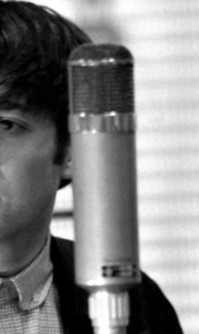 A suggestion is made by George Martin at this point to include an instrumental break in the song but, before "take five" begins, John reiterates to George Harrison about how it should be done. “Do the first bit but not the second bit, he said,” he tells George. When this blank solo section occurs, John and Paul sing a quick “from me” and then “to you” before finishing up the verse with vocals. Paul, however, at first forgets to add harmony to the second bridge which, once again, renders this complete take unusuable. A suggestion is made by George Martin at this point to include an instrumental break in the song but, before "take five" begins, John reiterates to George Harrison about how it should be done. “Do the first bit but not the second bit, he said,” he tells George. When this blank solo section occurs, John and Paul sing a quick “from me” and then “to you” before finishing up the verse with vocals. Paul, however, at first forgets to add harmony to the second bridge which, once again, renders this complete take unusuable.
 For some reason, "take six" didn’t get past the second measure, but the complete "take seven" ended up being the keeper. A decision was made to abandon the brief lead guitar riff in between the first two verses and the group ended up settling on the word “just” in the second verse. They also labored the vocal line “from me” in the instrumental section as we’ve come to know it. For some reason, "take six" didn’t get past the second measure, but the complete "take seven" ended up being the keeper. A decision was made to abandon the brief lead guitar riff in between the first two verses and the group ended up settling on the word “just” in the second verse. They also labored the vocal line “from me” in the instrumental section as we’ve come to know it.
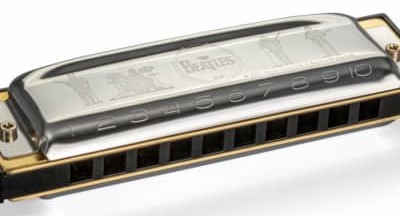 Another suggestion from George Martin at this session was to include harmonica in the intro, the instrumental section, and the conclusion of the song instead of just the guitar riff as they originally intended. So after "take seven" was deemed the best, John added his harmonica parts as an overdub while the original two-track tape was being recorded onto another two-track tape machine. "Take eight" through "take 10" introduced the harmonica riffs of the song as well as a low guitar passage in the instrumental section to accentuate the harmonica, undoubtedly played by George Harrison. Another suggestion from George Martin at this session was to include harmonica in the intro, the instrumental section, and the conclusion of the song instead of just the guitar riff as they originally intended. So after "take seven" was deemed the best, John added his harmonica parts as an overdub while the original two-track tape was being recorded onto another two-track tape machine. "Take eight" through "take 10" introduced the harmonica riffs of the song as well as a low guitar passage in the instrumental section to accentuate the harmonica, undoubtedly played by George Harrison.
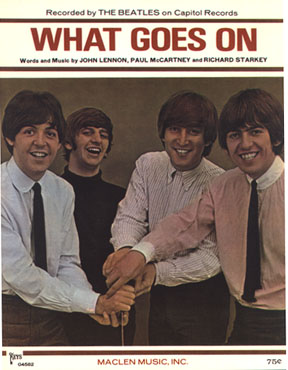 George Martin also instructed both John and Paul to sing unison “da, da, da, da, da, dun, dun, dah” vocals in the introduction as well. This was then performed as an edit piece, "take 11" not being good enough, but "take 12" succeeding. The song was then complete at approximately 4 pm, with work then starting on what became the b-side of the single, namely “Thank You Girl.” They did have an evening session on this day, which was used to record another Lennon / McCartney composition “The One After 909.” After they worked quite extensively on the song, and even contemplated working on another composition called “What Goes On,” they left this recording for the vaults, only to be officially revealed on the “Anthology 1” album. Funnily enough, both of these songs did get recorded and released during their recording career. George Martin also instructed both John and Paul to sing unison “da, da, da, da, da, dun, dun, dah” vocals in the introduction as well. This was then performed as an edit piece, "take 11" not being good enough, but "take 12" succeeding. The song was then complete at approximately 4 pm, with work then starting on what became the b-side of the single, namely “Thank You Girl.” They did have an evening session on this day, which was used to record another Lennon / McCartney composition “The One After 909.” After they worked quite extensively on the song, and even contemplated working on another composition called “What Goes On,” they left this recording for the vaults, only to be officially revealed on the “Anthology 1” album. Funnily enough, both of these songs did get recorded and released during their recording career.
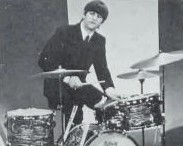 March 14th, 1963 was scheduled to create the mix necessary for “From Me To You.” Editing work needed to be accomplished in order to piece together a complete version of the song. Listening to the released mono and stereo versions of the song reveals much as to how this editing took place. The introduction to the mono version includes the harmonica riff, while the stereo version doesn’t. Also, the mono version includes a slightly strange effect in the fourth measure, which is where Ringo's drum fill introduces the first verse. This effect is due to synchronization of two different tape sources playing at the same time. Two tape machines playing the same song will vary because they don’t run at exactly the same speed. If one tape machine is moving slightly faster than the other, when the tape passes the slower moving machine, this synchronization sound appears. Therefore, George Martin must have synced-up two different tape machines to add the harmonica introduction to the mono version of the song. March 14th, 1963 was scheduled to create the mix necessary for “From Me To You.” Editing work needed to be accomplished in order to piece together a complete version of the song. Listening to the released mono and stereo versions of the song reveals much as to how this editing took place. The introduction to the mono version includes the harmonica riff, while the stereo version doesn’t. Also, the mono version includes a slightly strange effect in the fourth measure, which is where Ringo's drum fill introduces the first verse. This effect is due to synchronization of two different tape sources playing at the same time. Two tape machines playing the same song will vary because they don’t run at exactly the same speed. If one tape machine is moving slightly faster than the other, when the tape passes the slower moving machine, this synchronization sound appears. Therefore, George Martin must have synced-up two different tape machines to add the harmonica introduction to the mono version of the song.
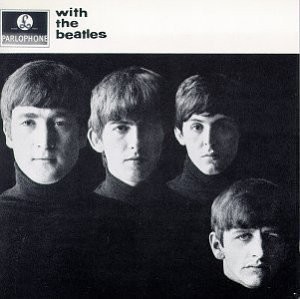 After this synchronization and/or other editing was done (from unknown take numbers), an actual mono mix was created, which is the mono version of the song we are all familiar with. Interestingly, a stereo mix was also created at that time from this synchronization edit job, but this mix apparently never saw the light of day. This was done probably because of the possibility of "From Me To You" being included on an album, for which a stereo mix was always needed. It was not accomplished in time to be included on their first UK album “Please Please Me,” which was released eight days later. Since their previous two singles did appear on that first album, George Martin probably thought this song would appear on their next British album, which ultimately became “With The Beatles.” Since this did not happen, the stereo mix made on this day appears to have been either locked away in the vaults or eventually discarded. After this synchronization and/or other editing was done (from unknown take numbers), an actual mono mix was created, which is the mono version of the song we are all familiar with. Interestingly, a stereo mix was also created at that time from this synchronization edit job, but this mix apparently never saw the light of day. This was done probably because of the possibility of "From Me To You" being included on an album, for which a stereo mix was always needed. It was not accomplished in time to be included on their first UK album “Please Please Me,” which was released eight days later. Since their previous two singles did appear on that first album, George Martin probably thought this song would appear on their next British album, which ultimately became “With The Beatles.” Since this did not happen, the stereo mix made on this day appears to have been either locked away in the vaults or eventually discarded.
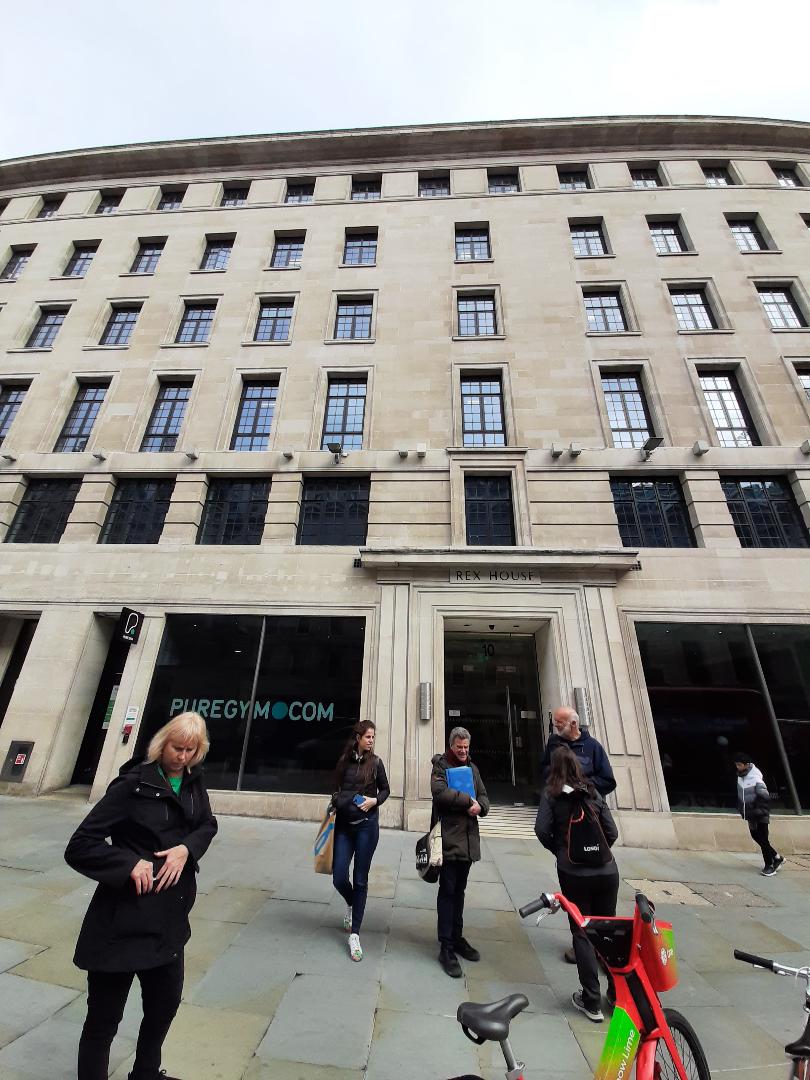 Interestingly, a total of eighteen additional recordings of "From Me To You" took place in 1963, most of these recordings being made for BBC radio broadcasts, the most BBC recordings of any individual Beatles' song in their history. The first two BBC recordings of the song were done on April 1st in Studio One of BBC Piccadilly Studios in London, the first version being recorded between 2:30 and 5:30 pm for the BBC radio program "Side By Side," which aired on April 22nd between 5 and 5:29 pm, just 11 days after the British single was released. The second version was recorded between 6:30 and 10:30 pm for a later episode of "Side By Side" that was to air on May 13th also between 5 and 5:29 pm. Interestingly, a total of eighteen additional recordings of "From Me To You" took place in 1963, most of these recordings being made for BBC radio broadcasts, the most BBC recordings of any individual Beatles' song in their history. The first two BBC recordings of the song were done on April 1st in Studio One of BBC Piccadilly Studios in London, the first version being recorded between 2:30 and 5:30 pm for the BBC radio program "Side By Side," which aired on April 22nd between 5 and 5:29 pm, just 11 days after the British single was released. The second version was recorded between 6:30 and 10:30 pm for a later episode of "Side By Side" that was to air on May 13th also between 5 and 5:29 pm.
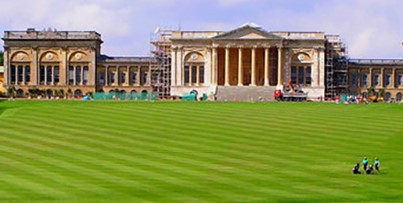 They next recorded the song on April 3rd of that year at the Playhouse Theatre in London between 8:30 and 9:45 pm before a live audience for the BBC radio show "Easy Beat," which was broadcast on April 7th between 10:30 and 11:30 pm. Then on April 4th, they recorded it at BBC Paris Studio in London between 11 am and 2 pm for another edition of "Side By Side," which was broadcast on June 24th between 5 and 5:29 pm. Later on April 4th, a surprisingly clear private recording of the song was made by John Bloomfield, a fifteen-year-old student in the audience of Stowe School at Roxburgh Hall in Stowe where The Beatles performed 22 songs between 6:30 to 7:30 pm, this all boys' school hearing this song performed live a full week before it was released in the UK. They next recorded the song on April 3rd of that year at the Playhouse Theatre in London between 8:30 and 9:45 pm before a live audience for the BBC radio show "Easy Beat," which was broadcast on April 7th between 10:30 and 11:30 pm. Then on April 4th, they recorded it at BBC Paris Studio in London between 11 am and 2 pm for another edition of "Side By Side," which was broadcast on June 24th between 5 and 5:29 pm. Later on April 4th, a surprisingly clear private recording of the song was made by John Bloomfield, a fifteen-year-old student in the audience of Stowe School at Roxburgh Hall in Stowe where The Beatles performed 22 songs between 6:30 to 7:30 pm, this all boys' school hearing this song performed live a full week before it was released in the UK.
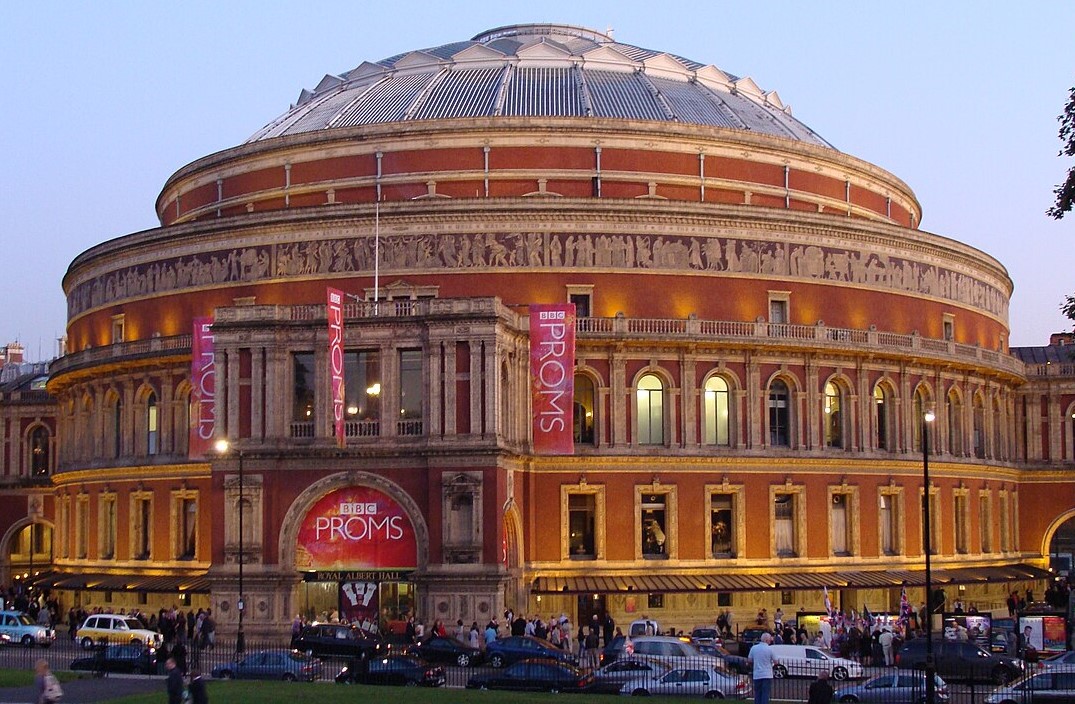 The next day, April 5th, brought the group to EMI House in central London in the early evening for a ceremony before EMI company executives to receive their first silver disc, their Parlophone single "Please Please Me," The Beatles also premeiring their follow-up single "From Me To You," which was privately recorded. They did a live broadcast of the song for "Swinging Sound '63" from the Royal Albert Hall in London on April 18th between 9:10 and 10:15 pm, this recording being produced by Terry Henebery and Ron Belchier. The next day, April 5th, brought the group to EMI House in central London in the early evening for a ceremony before EMI company executives to receive their first silver disc, their Parlophone single "Please Please Me," The Beatles also premeiring their follow-up single "From Me To You," which was privately recorded. They did a live broadcast of the song for "Swinging Sound '63" from the Royal Albert Hall in London on April 18th between 9:10 and 10:15 pm, this recording being produced by Terry Henebery and Ron Belchier.
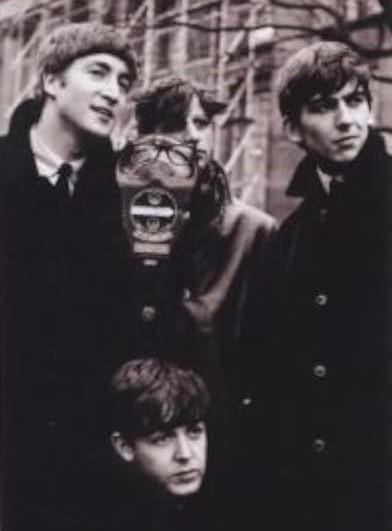 Another recording of the song took place on May 21st at The Playhouse Theatre in London between 5:30 and 6:30 pm for the popular radio show "Saturday Club," this being produced by Terry Henebery and broadcast on May 25th between 10 am and 12 noon. After a dinner break, The Beatles recorded the song yet again on this day at The Playhouse Theatre before a live audience between 10 and 11:15 pm for the radio show "Steppin' Out," which was broadcast on June 3rd between 10:31 and 11:30 am. Another recording of the song took place on May 21st at The Playhouse Theatre in London between 5:30 and 6:30 pm for the popular radio show "Saturday Club," this being produced by Terry Henebery and broadcast on May 25th between 10 am and 12 noon. After a dinner break, The Beatles recorded the song yet again on this day at The Playhouse Theatre before a live audience between 10 and 11:15 pm for the radio show "Steppin' Out," which was broadcast on June 3rd between 10:31 and 11:30 am.
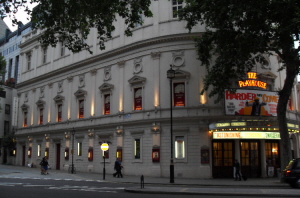 Following this came a recording of "From Me To You" on May 24th in Studio Two of Aeolian Hall in London between 2 and 6 pm for the first edition of their own BBC radio program entitled "Pop Go The Beatles." This first show, which was produced by Terry Henebery, was broadcast on June 4th between 5 and 5:29 pm. Next came a recording of the song at BBC Paris Studio in London between 9:30 am and 1:30 pm for the third edition of "Pop Go The Beatles," this also being produced by Terry Henebery, the program airing on June 18th between 5 and 5:29 pm. They recorded the song again on June 19th at Playhouse Theatre in London between 8:45 and 9:45 before a screaming audience for the radio show "Easy Beat," this recording being produced by Ron Belchier and broadcast on June 23rd between 10:31 and 11:30 pm. Following this came a recording of "From Me To You" on May 24th in Studio Two of Aeolian Hall in London between 2 and 6 pm for the first edition of their own BBC radio program entitled "Pop Go The Beatles." This first show, which was produced by Terry Henebery, was broadcast on June 4th between 5 and 5:29 pm. Next came a recording of the song at BBC Paris Studio in London between 9:30 am and 1:30 pm for the third edition of "Pop Go The Beatles," this also being produced by Terry Henebery, the program airing on June 18th between 5 and 5:29 pm. They recorded the song again on June 19th at Playhouse Theatre in London between 8:45 and 9:45 before a screaming audience for the radio show "Easy Beat," this recording being produced by Ron Belchier and broadcast on June 23rd between 10:31 and 11:30 pm.
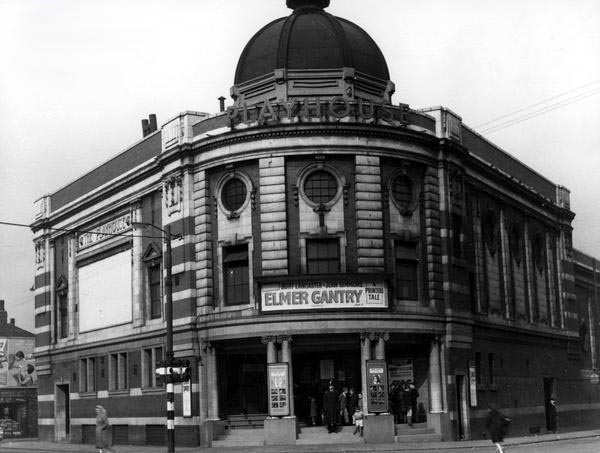 On June 24th, The Beatles recorded "From Me To You" at The Playhouse Theatre in London between 5:30 and 6:30 pm for "Saturday Club," which was produced by Jimmy Grant and Bernie Andrews and broadcast on June 29th between 10 am and 12 noon. They recorded the song next at Manchester's Playhouse Theatre on July 3rd of that year between 8 and 9 pm before a live audience for "The Beat Show," which was produced by Geoff Lawrence and broadcast on July 4th between 1 and 1:30 pm. Then we go to August 1st for a recording of the song at The Playhouse Theatre in Manchester between 4 and 6 pm for the twelfth edition of "Pop Go The Beatles," which was produced by Terry Henebery and broadcast on September 3rd between 5 and 5:29 pm. On June 24th, The Beatles recorded "From Me To You" at The Playhouse Theatre in London between 5:30 and 6:30 pm for "Saturday Club," which was produced by Jimmy Grant and Bernie Andrews and broadcast on June 29th between 10 am and 12 noon. They recorded the song next at Manchester's Playhouse Theatre on July 3rd of that year between 8 and 9 pm before a live audience for "The Beat Show," which was produced by Geoff Lawrence and broadcast on July 4th between 1 and 1:30 pm. Then we go to August 1st for a recording of the song at The Playhouse Theatre in Manchester between 4 and 6 pm for the twelfth edition of "Pop Go The Beatles," which was produced by Terry Henebery and broadcast on September 3rd between 5 and 5:29 pm.
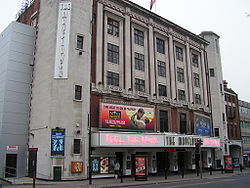 On August 21st, 1963, during their six consecutive night residency in Bournemouth, Hants, the chief technician at the Gaumont Cinema recorded The Beatles' show on his reel-to-reel tape recorder in order to test out the venue's sound system. Their fourth song on their set list that day was their most recent hit "From Me To You." This clear sounding 25-minute tape reel was sold by Christie's auction house in 1998 for a total of 25,300 pounds and has not yet been made available commercially. On August 21st, 1963, during their six consecutive night residency in Bournemouth, Hants, the chief technician at the Gaumont Cinema recorded The Beatles' show on his reel-to-reel tape recorder in order to test out the venue's sound system. Their fourth song on their set list that day was their most recent hit "From Me To You." This clear sounding 25-minute tape reel was sold by Christie's auction house in 1998 for a total of 25,300 pounds and has not yet been made available commercially.
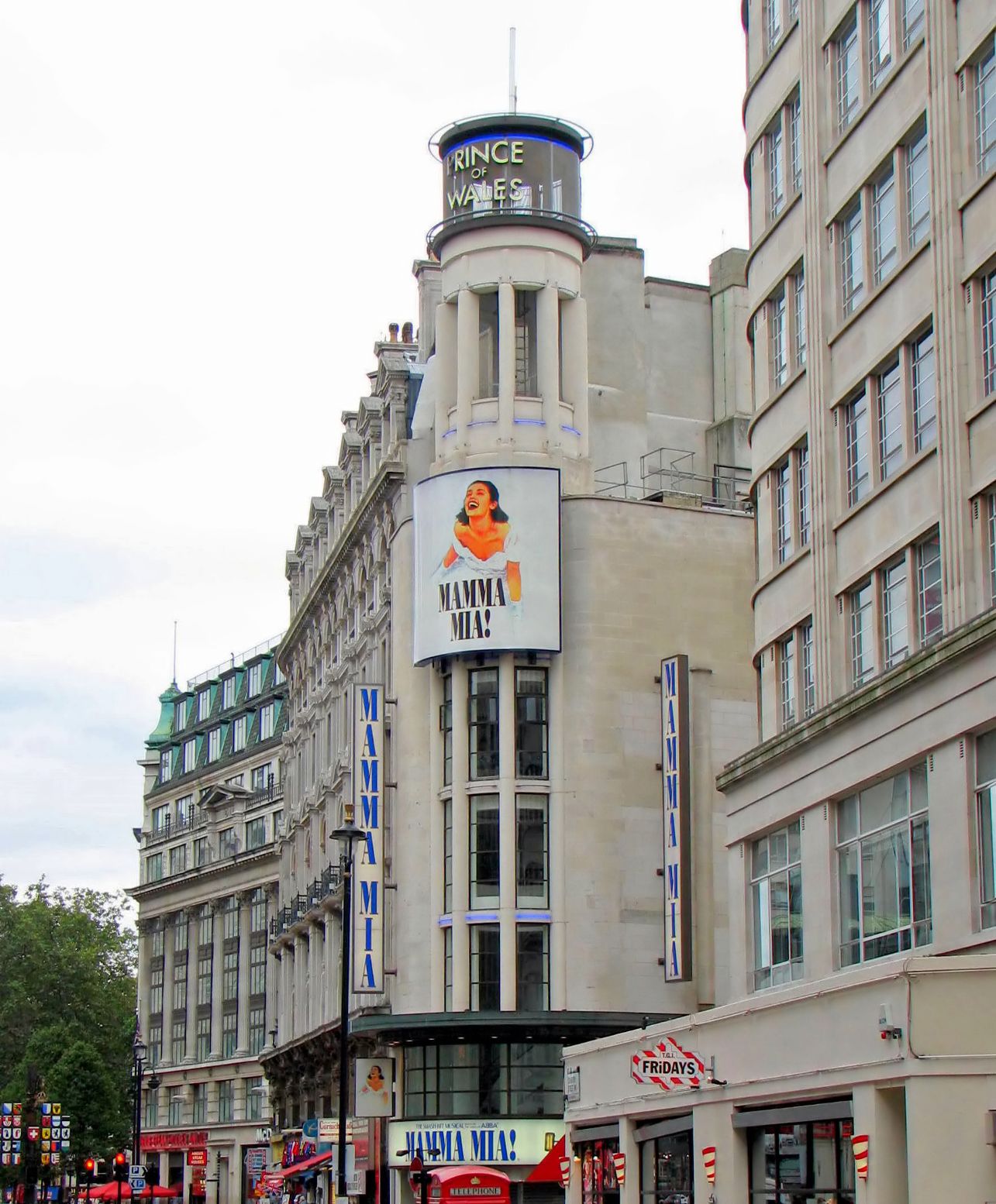 The fourteenth edition of "Pop Go The Beatles" also featured the song, this new version being recorded on September 3rd in Studio Two of Aeolian Hall in London between 5 and 7:30 pm, this program airing on September 17th between 5 and 5:29 pm. Then on October 16th, 1963, Ron Belchier produced a new recording of the song at The Playhouse Theatre in London between 9 and 10 pm for the radio show "Easy Beat," which was broadcast on October 20th between 10:31 and 11:30 pm. Finally, the Royal Command Performance from November 4th at the Prince Of Wales Theatre in London included a new live recording of the song that was broadcast on the BBC radio Light Programme on November 10th between 7:35 and 8:30 pm. The fourteenth edition of "Pop Go The Beatles" also featured the song, this new version being recorded on September 3rd in Studio Two of Aeolian Hall in London between 5 and 7:30 pm, this program airing on September 17th between 5 and 5:29 pm. Then on October 16th, 1963, Ron Belchier produced a new recording of the song at The Playhouse Theatre in London between 9 and 10 pm for the radio show "Easy Beat," which was broadcast on October 20th between 10:31 and 11:30 pm. Finally, the Royal Command Performance from November 4th at the Prince Of Wales Theatre in London included a new live recording of the song that was broadcast on the BBC radio Light Programme on November 10th between 7:35 and 8:30 pm.
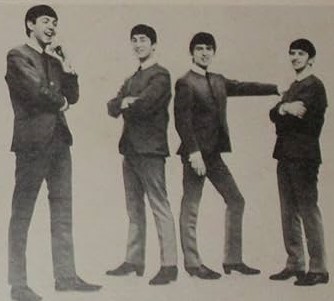 Interestingly, The Beatles recorded three more renditions of "From Me To You" for BBC radio that were in actuality variations of the original song. They recorded a fragment of the song at London's Playhouse Theatre between 3 and 6:30 pm on December 17th, 1963 as part of what was called the "Chrimble Mudley," which was a 29-second recording featuring a small bit of each Beatles single up to that point along with "Rudolph The Red-Nosed Reindeer." This was produced by Jimmy Grant and Bernie Andrews and broadcast on the Christmas edition of "Saturday Club" on December 21st between 10 am and 12 noon. Interestingly, The Beatles recorded three more renditions of "From Me To You" for BBC radio that were in actuality variations of the original song. They recorded a fragment of the song at London's Playhouse Theatre between 3 and 6:30 pm on December 17th, 1963 as part of what was called the "Chrimble Mudley," which was a 29-second recording featuring a small bit of each Beatles single up to that point along with "Rudolph The Red-Nosed Reindeer." This was produced by Jimmy Grant and Bernie Andrews and broadcast on the Christmas edition of "Saturday Club" on December 21st between 10 am and 12 noon.
.jpg) Then came the group's recording of a special theme song to open and close their new BBC radio program "From Us To You," this 55-second rendition changing the word "me" to "us" whenever appropriate. The first of the two times they recorded this theme song was on December 18th, 1963 at BBC Paris Studio in London between 7 and 10:30 pm, this first edition of their radio show being broadcast on December 26th between 10 am and 12 noon, this theme song opening and closing the program. A new recording of the theme song for "From Us To You" was done on February 28th, 1964 in Studio One of BBC Piccadilly Studios in London between 6:30 and 9 pm, this being produced by Bryant Marriott and used to open and close the second edition of the program on March 30th between 10 am and 12 noon. This same theme song recording was also used on the third "From Us To You" edition (broadcast on May 18th, 1964) and the fourth edition (broadcast on August 3rd, 1964). Then came the group's recording of a special theme song to open and close their new BBC radio program "From Us To You," this 55-second rendition changing the word "me" to "us" whenever appropriate. The first of the two times they recorded this theme song was on December 18th, 1963 at BBC Paris Studio in London between 7 and 10:30 pm, this first edition of their radio show being broadcast on December 26th between 10 am and 12 noon, this theme song opening and closing the program. A new recording of the theme song for "From Us To You" was done on February 28th, 1964 in Studio One of BBC Piccadilly Studios in London between 6:30 and 9 pm, this being produced by Bryant Marriott and used to open and close the second edition of the program on March 30th between 10 am and 12 noon. This same theme song recording was also used on the third "From Us To You" edition (broadcast on May 18th, 1964) and the fourth edition (broadcast on August 3rd, 1964).
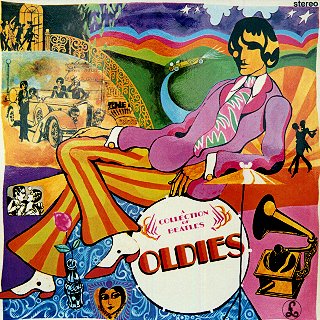 Because The Beatles did not have a new album for release during the 1966 Christmas season, Parlophone decided to assemble and release a "greatest hits" package entitled “A Collection Of Beatles Oldies.” “From Me To You” would surely need to be included on such an album, so a stereo mix of the song was needed. The stereo mix made on March 14, 1963, could not be located and was thought to be scrapped, so they just decided to take the original two-track master tape and make that the stereo mix of the song – instruments on the left channel and vocals on the right channel. The only exception to this rule is the unison vocal introduction and harmonica parts heard in the solo section and conclusion of the song, which were overdubbed on both channels and are here placed in the center of the mix. Since the introductory harmonica passage was synchronized in from another tape machine directly for the mono mix, it was not on the original two-track master tape. Therefore, the harmonica does not appear on the stereo mix of the song. Because The Beatles did not have a new album for release during the 1966 Christmas season, Parlophone decided to assemble and release a "greatest hits" package entitled “A Collection Of Beatles Oldies.” “From Me To You” would surely need to be included on such an album, so a stereo mix of the song was needed. The stereo mix made on March 14, 1963, could not be located and was thought to be scrapped, so they just decided to take the original two-track master tape and make that the stereo mix of the song – instruments on the left channel and vocals on the right channel. The only exception to this rule is the unison vocal introduction and harmonica parts heard in the solo section and conclusion of the song, which were overdubbed on both channels and are here placed in the center of the mix. Since the introductory harmonica passage was synchronized in from another tape machine directly for the mono mix, it was not on the original two-track master tape. Therefore, the harmonica does not appear on the stereo mix of the song.
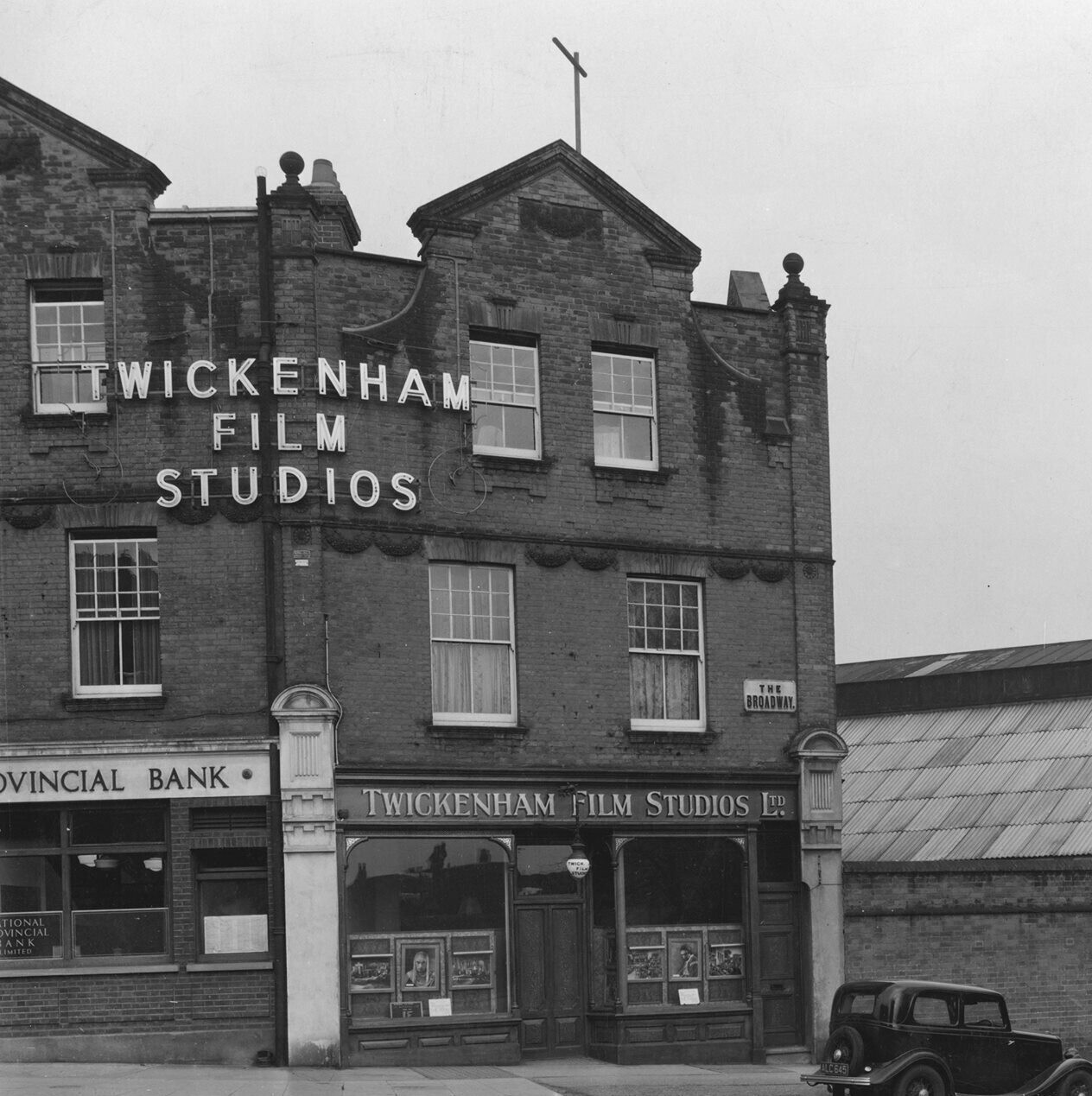 On January 7th, 1969, the Beatles briefly returned to the song while rehearsing material for their “Get Back / Let It Be” project at Twickenham Film Studios. While this does indeed qualify for being part of the “Recording History” of the song “From Me To You,” it was not a serious recording attempt by the group and, appropriately, has never been released. On January 7th, 1969, the Beatles briefly returned to the song while rehearsing material for their “Get Back / Let It Be” project at Twickenham Film Studios. While this does indeed qualify for being part of the “Recording History” of the song “From Me To You,” it was not a serious recording attempt by the group and, appropriately, has never been released.
 Sometime in 2023, Giles Martin was given the assignment of creating a "demix remix" of "From Me To You" for inclusion on the 50th Anniversary edition of the compilation album "The Beatles / 1962 - 1966" ("The Red Album"). With Peter Jackson's AI technology at his disposal, Giles Martin was able to utilize this "new machine-learning techology" in order that "individual elements that were put to tape...and were therefore impossible to separate" could be "untangled, allowing Giles (Martin) to put the original recordings back together with even greater clarity and impact," as stated by John Harris in the liner notes of the above mentioned album. Sometime in 2023, Giles Martin was given the assignment of creating a "demix remix" of "From Me To You" for inclusion on the 50th Anniversary edition of the compilation album "The Beatles / 1962 - 1966" ("The Red Album"). With Peter Jackson's AI technology at his disposal, Giles Martin was able to utilize this "new machine-learning techology" in order that "individual elements that were put to tape...and were therefore impossible to separate" could be "untangled, allowing Giles (Martin) to put the original recordings back together with even greater clarity and impact," as stated by John Harris in the liner notes of the above mentioned album.
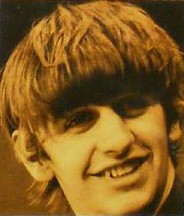 The mono mix was here utilized in creating this new stereo mix using AI, this being especially apparent with the presence of the harmonica in the intro, which does not appear in the earlier 1966 stereo mix. The stereo landscape is much more palatable here, the vocals being centered in the mix while the instruments are spread appropriately. For instance, John's guitar is heard primarily in the right channel while the snap of Ringo's snare appears more in the left channel, the toms in the right. The mono mix was here utilized in creating this new stereo mix using AI, this being especially apparent with the presence of the harmonica in the intro, which does not appear in the earlier 1966 stereo mix. The stereo landscape is much more palatable here, the vocals being centered in the mix while the instruments are spread appropriately. For instance, John's guitar is heard primarily in the right channel while the snap of Ringo's snare appears more in the left channel, the toms in the right.
Song Structure and Style
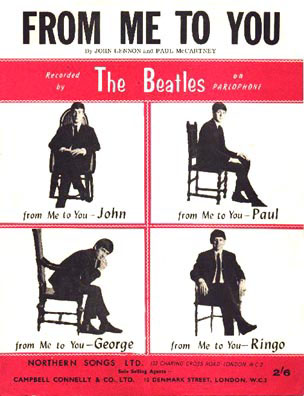 As was usual for the Lennon / McCartney songwriting team up to this point, this song's structure consists of a 'verse/ verse/ bridge/ verse' format (or aaba). To this we tack on an intro, then a solo / verse section, a repeat of the bridge and final verse, and then a conclusion with full ending. As was usual for the Lennon / McCartney songwriting team up to this point, this song's structure consists of a 'verse/ verse/ bridge/ verse' format (or aaba). To this we tack on an intro, then a solo / verse section, a repeat of the bridge and final verse, and then a conclusion with full ending.
We start out with a four measure intro, which is identical in melody line to the first two measures of the verse but is repeated twice. This intro features unison vocals from John and Paul and a distinctive harmonica riff (on the mono version, that is), ending with a drum fill from Ringo in the final measure.
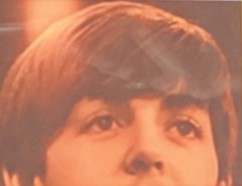 The first verse, as well as the entire song, is vocalized by both John and Paul with occasional bursts of harmony from Paul. The first four measures of the eight measure verse is the difference between the verses lyrically, while the final four measures are identical in all verses, highlighting the title as the key phrase, or hook-line, of the song. You never have any doubt as to what the title of the song is. The first verse, as well as the entire song, is vocalized by both John and Paul with occasional bursts of harmony from Paul. The first four measures of the eight measure verse is the difference between the verses lyrically, while the final four measures are identical in all verses, highlighting the title as the key phrase, or hook-line, of the song. You never have any doubt as to what the title of the song is.
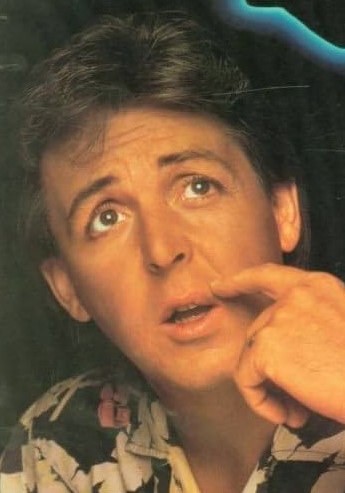 After a second verse that is identical to the first apart from the lyrics of the first four measures, we enter into the eight measure bridge, which is where we see the maturity of the Beatles' songwriting beginning to flourish. "That middle-eight was a big departure for us," McCartney elaborated. "Say you're in C then go to A minor, fairly ordinary, C, change it to G. And then F, pretty ordinary, but then it goes (sings) 'I got arms' and that's a G Minor. Going to G Minor and a C takes you to a whole new world. It was exciting." After a second verse that is identical to the first apart from the lyrics of the first four measures, we enter into the eight measure bridge, which is where we see the maturity of the Beatles' songwriting beginning to flourish. "That middle-eight was a big departure for us," McCartney elaborated. "Say you're in C then go to A minor, fairly ordinary, C, change it to G. And then F, pretty ordinary, but then it goes (sings) 'I got arms' and that's a G Minor. Going to G Minor and a C takes you to a whole new world. It was exciting."
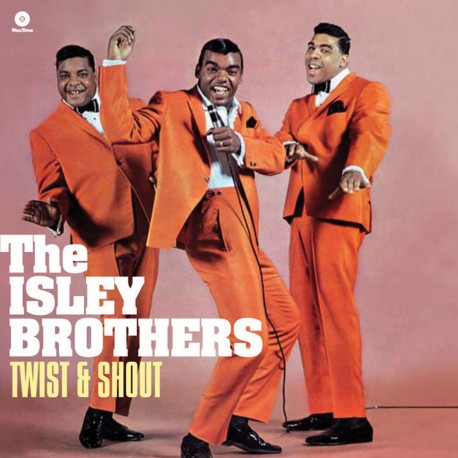 The vocals in the bridge are sung in harmony throughout and then conclude with a quick glimpse of their usual Isley Brothers' falsetto "oooh," which would really by emphasized in their next single, "She Loves You." The vocals in the bridge are sung in harmony throughout and then conclude with a quick glimpse of their usual Isley Brothers' falsetto "oooh," which would really by emphasized in their next single, "She Loves You."
After the bridge, which takes the song away from the home key of C, they segue back for an identical repeat of the first verse. This then completes the aaba structure. Then we move into the solo/verse section, which is identical to the eight measure verse chords and melody line, only the first four measures being played with harmonica and (if you listen carefully enough) lead guitar played an octave lower than the harmonica line. The last four measures are an identical repeat of the verse lyrics with the hook-line still in place.
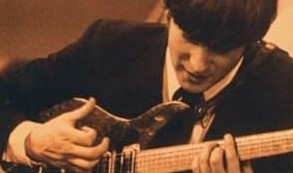 After we then repeat the bridge and first verse, we see that the final measure of that verse is cut off in order to enter into a five measure outro, or conclusion, to the song. After repeating and accenting the words "to you" two more times with different chord changes and drum fills on the off-beat before the third beat of each measure, we return to the harmonica riff and unison singing of the intro. Interestingly, they choose to end on an A Minor chord, which leaves the song unresolved and hanging in the air. Another new trick initiated on this song. After we then repeat the bridge and first verse, we see that the final measure of that verse is cut off in order to enter into a five measure outro, or conclusion, to the song. After repeating and accenting the words "to you" two more times with different chord changes and drum fills on the off-beat before the third beat of each measure, we return to the harmonica riff and unison singing of the intro. Interestingly, they choose to end on an A Minor chord, which leaves the song unresolved and hanging in the air. Another new trick initiated on this song.
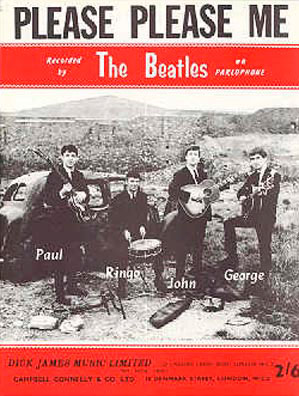 Lyrically, we see portrayed in this song the innocence of sentiment as displayed in a lot of songs of the pop era. The singer will give "anything" to his girlfriend that she requests. The "anything" apparently only refers to her romantic needs since the singer only references "arms that long to hold" her and "lips that long to kiss" her. Having "a heart that's oh, so true," after all, is pretty standard fare for 1963. Since dissatisfaction with what his woman does for him was already addressed in their previous single "Please Please Me," this appears to be a step backwards lyrically. But, with the pressure to follow up a big hit, which they've never had to do before, it seems that they succumbed to the pressure of what was usual in the pop charts to fill the need. After all, what "From Me To You" lacks lyrically is made up for in song structure. Lyrically, we see portrayed in this song the innocence of sentiment as displayed in a lot of songs of the pop era. The singer will give "anything" to his girlfriend that she requests. The "anything" apparently only refers to her romantic needs since the singer only references "arms that long to hold" her and "lips that long to kiss" her. Having "a heart that's oh, so true," after all, is pretty standard fare for 1963. Since dissatisfaction with what his woman does for him was already addressed in their previous single "Please Please Me," this appears to be a step backwards lyrically. But, with the pressure to follow up a big hit, which they've never had to do before, it seems that they succumbed to the pressure of what was usual in the pop charts to fill the need. After all, what "From Me To You" lacks lyrically is made up for in song structure.
 John Lennon is to the fore throughout the song, with his commanding lead vocals and harmonica riff. McCartney's bouncing harmony lines sprinkled throughout the song are edivence of to his natural musical ability and sense of harmony. His bass work seems to encompass a standard "oom-pah" alternation but, upon closer inspection, is made up of quarter- and eighth-notes. John Lennon is to the fore throughout the song, with his commanding lead vocals and harmonica riff. McCartney's bouncing harmony lines sprinkled throughout the song are edivence of to his natural musical ability and sense of harmony. His bass work seems to encompass a standard "oom-pah" alternation but, upon closer inspection, is made up of quarter- and eighth-notes.
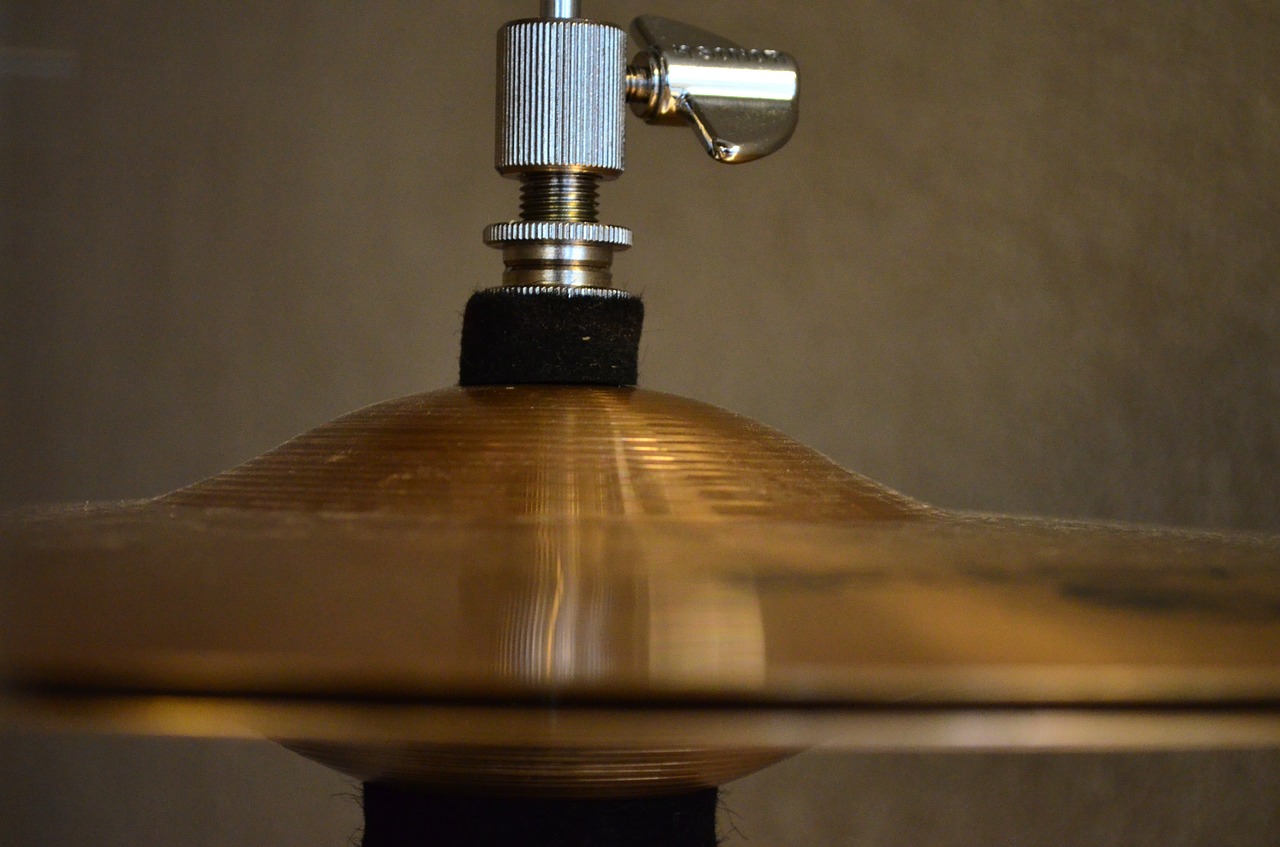 Ringo Starr keeps somewhat subdued on his closed hi-hat throughout the song, although his emphasized accents and drum fills at the conclusion of each bridge are completely appropriate for cueing in audiences for screaming, as they usually did at this point. George Harrison, on the other hand, is least noticeable on this track, his guitar riffs being overshadowed by John's harmonica due to George Martin's suggestion. Harrison's presence is felt through his guitar work, which is primarily rhythm in this case, as with Lennon. Ringo Starr keeps somewhat subdued on his closed hi-hat throughout the song, although his emphasized accents and drum fills at the conclusion of each bridge are completely appropriate for cueing in audiences for screaming, as they usually did at this point. George Harrison, on the other hand, is least noticeable on this track, his guitar riffs being overshadowed by John's harmonica due to George Martin's suggestion. Harrison's presence is felt through his guitar work, which is primarily rhythm in this case, as with Lennon.
 Vee-Jay's first release of "From Me To You," on May 6th, 1963
|
American Releases
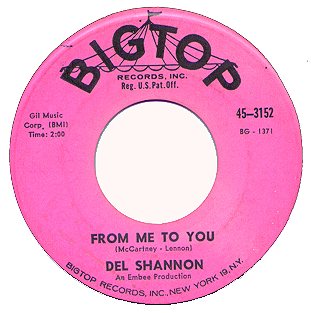 May 6th, 1963 was the first release of "From Me To You" in America. Vee-Jay Records chose to release this as their second single even after their first single "Please Please Me" failed miserably for them. With "Thank You Girl" as the b-side, it appeared to have suffered the exact same fate as the first single - not showing up in the charts at all. Then Del Shannon's cover version of the song started making ripples on the charts, peaking at #77 on the Billboard Hot 100. Vee-Jay tried promoting The Beatle's version through magazine ads and promotional copies stamped with the phrase "The Original Hit." With some radio airplay in some locations, it ended up peaking at #116 by August of 1963. May 6th, 1963 was the first release of "From Me To You" in America. Vee-Jay Records chose to release this as their second single even after their first single "Please Please Me" failed miserably for them. With "Thank You Girl" as the b-side, it appeared to have suffered the exact same fate as the first single - not showing up in the charts at all. Then Del Shannon's cover version of the song started making ripples on the charts, peaking at #77 on the Billboard Hot 100. Vee-Jay tried promoting The Beatle's version through magazine ads and promotional copies stamped with the phrase "The Original Hit." With some radio airplay in some locations, it ended up peaking at #116 by August of 1963.
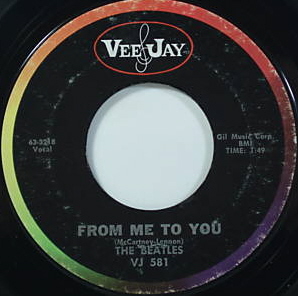 With the influx of Beatlemania at the beginning of 1964, Vee-Jay thought to re-release the song, but this time by combining it with the first single, thereby placing "From Me To You" as the b-side to "Please Please Me." Had they known that The Beatles' popularity would have taken hold as it did, the label no doubt would have released the singles as they were and thereby generated more sales. Later in the year, for instance, they were scrambling for more songs to release as singles, such as "Twist And Shout" and "Do You Want To Know A Secret." But as it was, this January 3rd, 1964 release was quite successful, placing "Please Please Me" at #3 on the Billboard Hot 100, while the hugely successful "From Me To You" only peaked at #41, missing the Top 40 entirely. With the influx of Beatlemania at the beginning of 1964, Vee-Jay thought to re-release the song, but this time by combining it with the first single, thereby placing "From Me To You" as the b-side to "Please Please Me." Had they known that The Beatles' popularity would have taken hold as it did, the label no doubt would have released the singles as they were and thereby generated more sales. Later in the year, for instance, they were scrambling for more songs to release as singles, such as "Twist And Shout" and "Do You Want To Know A Secret." But as it was, this January 3rd, 1964 release was quite successful, placing "Please Please Me" at #3 on the Billboard Hot 100, while the hugely successful "From Me To You" only peaked at #41, missing the Top 40 entirely.
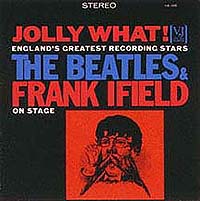 The first US album to feature the song was released on February 26th, 1964. Vee-Jay released a totally misleading album entitled "Jolly What! England's Greatest Recording Stars: The Beatles and Frank Ifield On Stage." This compilation album featured four studio tracks by The Beatles, which consisted of their previous two Vee-Jay singles, and eight studio recordings by Frank Ifield, who recently scored an American Top 5 hit "I Remember You." Even though there were stereo pressings of this disc, it featured the mono mix of "From Me To You" because that's all EMI sent to Vee-Jay. The first US album to feature the song was released on February 26th, 1964. Vee-Jay released a totally misleading album entitled "Jolly What! England's Greatest Recording Stars: The Beatles and Frank Ifield On Stage." This compilation album featured four studio tracks by The Beatles, which consisted of their previous two Vee-Jay singles, and eight studio recordings by Frank Ifield, who recently scored an American Top 5 hit "I Remember You." Even though there were stereo pressings of this disc, it featured the mono mix of "From Me To You" because that's all EMI sent to Vee-Jay.
.jpg) Sometime in August of 1964, Vee-Jay Records re-released its previous Beatles' singles on the label Oldies 45 specifically marketed for sales in the oldies section of record and department stores. They chose the "Please Please Me / From Me To You" format for this release, which was only in print for a matter of months. Sometime in August of 1964, Vee-Jay Records re-released its previous Beatles' singles on the label Oldies 45 specifically marketed for sales in the oldies section of record and department stores. They chose the "Please Please Me / From Me To You" format for this release, which was only in print for a matter of months.
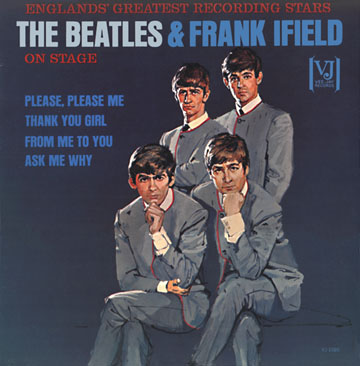 Then on October 10th, 1964, just before Vee-Jay was to lose its right to release Beatles recordings, they tried one further attempt at sales by re-releasing the "Jolly What" album as "The Beatles and Frank Ifield On Stage." The only difference between the two albums was a different cover, this one featuring a drawn portrait of The Beatles only. Mono and stereo copies were again printed, but since only 3,000 mono copies and 500 stereo copies are estimated to have been made, both are highly collectable today. Then on October 10th, 1964, just before Vee-Jay was to lose its right to release Beatles recordings, they tried one further attempt at sales by re-releasing the "Jolly What" album as "The Beatles and Frank Ifield On Stage." The only difference between the two albums was a different cover, this one featuring a drawn portrait of The Beatles only. Mono and stereo copies were again printed, but since only 3,000 mono copies and 500 stereo copies are estimated to have been made, both are highly collectable today.
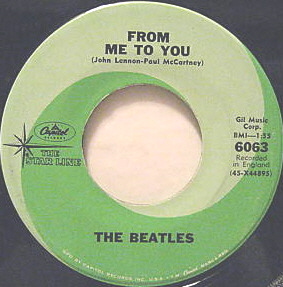 Strangely enough, Capitol Records neglected to include "From Me To You" on their album "The Early Beatles." Instead, they released their own version of the "Please Please Me / From Me To You" single on their budget Star Line label on October 11th, 1965. Strangely enough, Capitol Records neglected to include "From Me To You" on their album "The Early Beatles." Instead, they released their own version of the "Please Please Me / From Me To You" single on their budget Star Line label on October 11th, 1965.
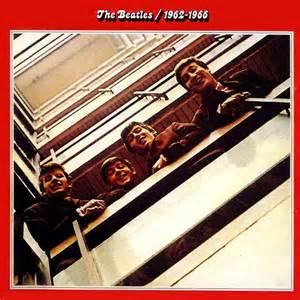 The next time "From Me To You" would be released was on April 2nd, 1973 on the double compilation album "The Beatles / 1962-1966" (aka "The Red Album"). It may have surprised American audiences at this point that this song, relatively unknown in the US, should be on a "greatest hits" package. Most Americans did not know that the song was actually one of the biggest British hits of their career, peaking at #1 for seven weeks in their home country. The next time "From Me To You" would be released was on April 2nd, 1973 on the double compilation album "The Beatles / 1962-1966" (aka "The Red Album"). It may have surprised American audiences at this point that this song, relatively unknown in the US, should be on a "greatest hits" package. Most Americans did not know that the song was actually one of the biggest British hits of their career, peaking at #1 for seven weeks in their home country.
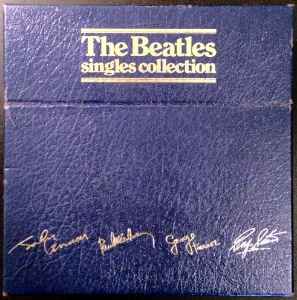 The next time "From Me To You" was paired with "Thank You Girl" on a single in America was on December 6th, 1982 as featured in the vinyl box set "The Beatles Singles Collection." When this package was released as "The Beatles CD Singles Collection" on November 11th, 1992 and as a reissued vinyl collection titled "The Singles Collection" on November 22nd, 2019, this same single was included. The next time "From Me To You" was paired with "Thank You Girl" on a single in America was on December 6th, 1982 as featured in the vinyl box set "The Beatles Singles Collection." When this package was released as "The Beatles CD Singles Collection" on November 11th, 1992 and as a reissued vinyl collection titled "The Singles Collection" on November 22nd, 2019, this same single was included.
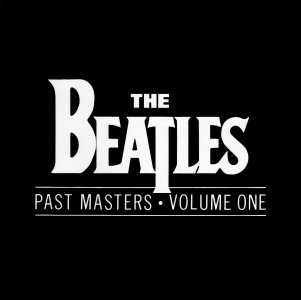 March 7th, 1988 was the next US release of the song on the CD titled "Past Masters, Volume One." This release contained all Beatles tracks not released on a British album. The original mono mix is heard on this release. Both volumes of "Past Masters" were combined for a two-album vinyl release on October 24th, 1988, and then for a remastered double-CD on September 9th, 2009 and remastered vinyl set on November 12th, 2012. March 7th, 1988 was the next US release of the song on the CD titled "Past Masters, Volume One." This release contained all Beatles tracks not released on a British album. The original mono mix is heard on this release. Both volumes of "Past Masters" were combined for a two-album vinyl release on October 24th, 1988, and then for a remastered double-CD on September 9th, 2009 and remastered vinyl set on November 12th, 2012.
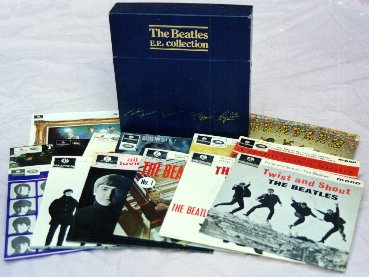 On June 30th, 1992, Capitol released the box set “Compact Disc EP Collection,” which included CD replicas of each of the original British EP’s of the '60s. The September 6th, 1963 released EP “The Beatles’ Hits” included the mono mix of “From Me To You.” On June 30th, 1992, Capitol released the box set “Compact Disc EP Collection,” which included CD replicas of each of the original British EP’s of the '60s. The September 6th, 1963 released EP “The Beatles’ Hits” included the mono mix of “From Me To You.”
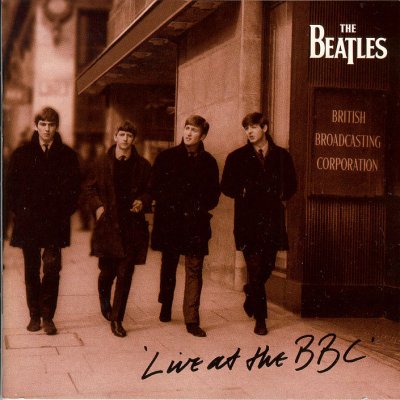 An interesting rendition of the song was released on December 6th, 1994 on the double CD “Live At The BBC.” To accommodate a Beatles BBC radio series of 1963/64 titled “From Us To You,” the band recorded a short theme song with that title to be broadcast on the show. Normally used with a voice-over from the host of the program, an edited version is included on this 1994 release. An interesting rendition of the song was released on December 6th, 1994 on the double CD “Live At The BBC.” To accommodate a Beatles BBC radio series of 1963/64 titled “From Us To You,” the band recorded a short theme song with that title to be broadcast on the show. Normally used with a voice-over from the host of the program, an edited version is included on this 1994 release.
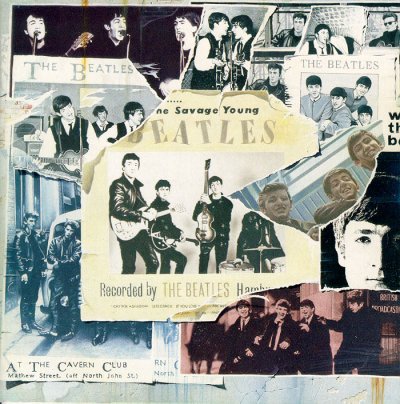 The following year, on November 21st, 1995, the long-awaited “Anthology 1” album was released. Five songs recorded before a live studio audience in Stockholm, Sweden, on October 24th, 1963, including “From Me To You,” were featured on this very interesting compilation double disc. The following year, on November 21st, 1995, the long-awaited “Anthology 1” album was released. Five songs recorded before a live studio audience in Stockholm, Sweden, on October 24th, 1963, including “From Me To You,” were featured on this very interesting compilation double disc.
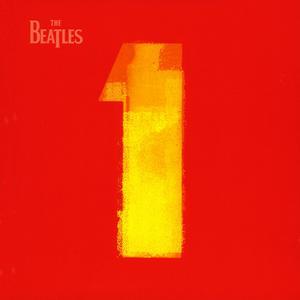 The very successful “greatest hits” compilation album “Beatles 1” was released on November 13th, 2000. “From Me To You” is the second track, cementing in American minds that the song was indeed a #1 hit in Britain, since only #1 hits were allowed on this album. A remastered version of the album was released in September of 2011, while a newly re-mixed version of this compilation was released on November 6th, 2015. The very successful “greatest hits” compilation album “Beatles 1” was released on November 13th, 2000. “From Me To You” is the second track, cementing in American minds that the song was indeed a #1 hit in Britain, since only #1 hits were allowed on this album. A remastered version of the album was released in September of 2011, while a newly re-mixed version of this compilation was released on November 6th, 2015.
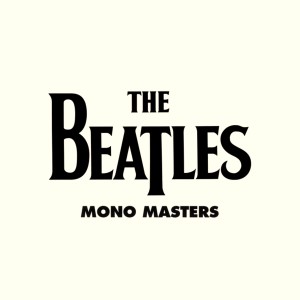 September 9th, 2009 was the release date of the all-inclusive CD box set “The Beatles In Mono,” which included the disc “Mono Masters” that includes a vibrant remastered mono mix of "From Me To You." The vinyl edition of this box set was first released on September 9th, 2014. September 9th, 2009 was the release date of the all-inclusive CD box set “The Beatles In Mono,” which included the disc “Mono Masters” that includes a vibrant remastered mono mix of "From Me To You." The vinyl edition of this box set was first released on September 9th, 2014.
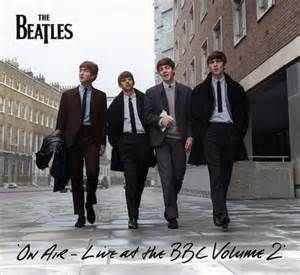 On November 11th, 2013, the album "On Air - Live At The BBC Volume 2" was released, which featured yet another version of the song as recorded live at London's Playhouse Theater on October 16th, 1963. This rendition aired on October 20th, 1963 on the radio program "Easy Beat." The absence of Lennon's harmonica is apparent but barely noticed. On November 11th, 2013, the album "On Air - Live At The BBC Volume 2" was released, which featured yet another version of the song as recorded live at London's Playhouse Theater on October 16th, 1963. This rendition aired on October 20th, 1963 on the radio program "Easy Beat." The absence of Lennon's harmonica is apparent but barely noticed.
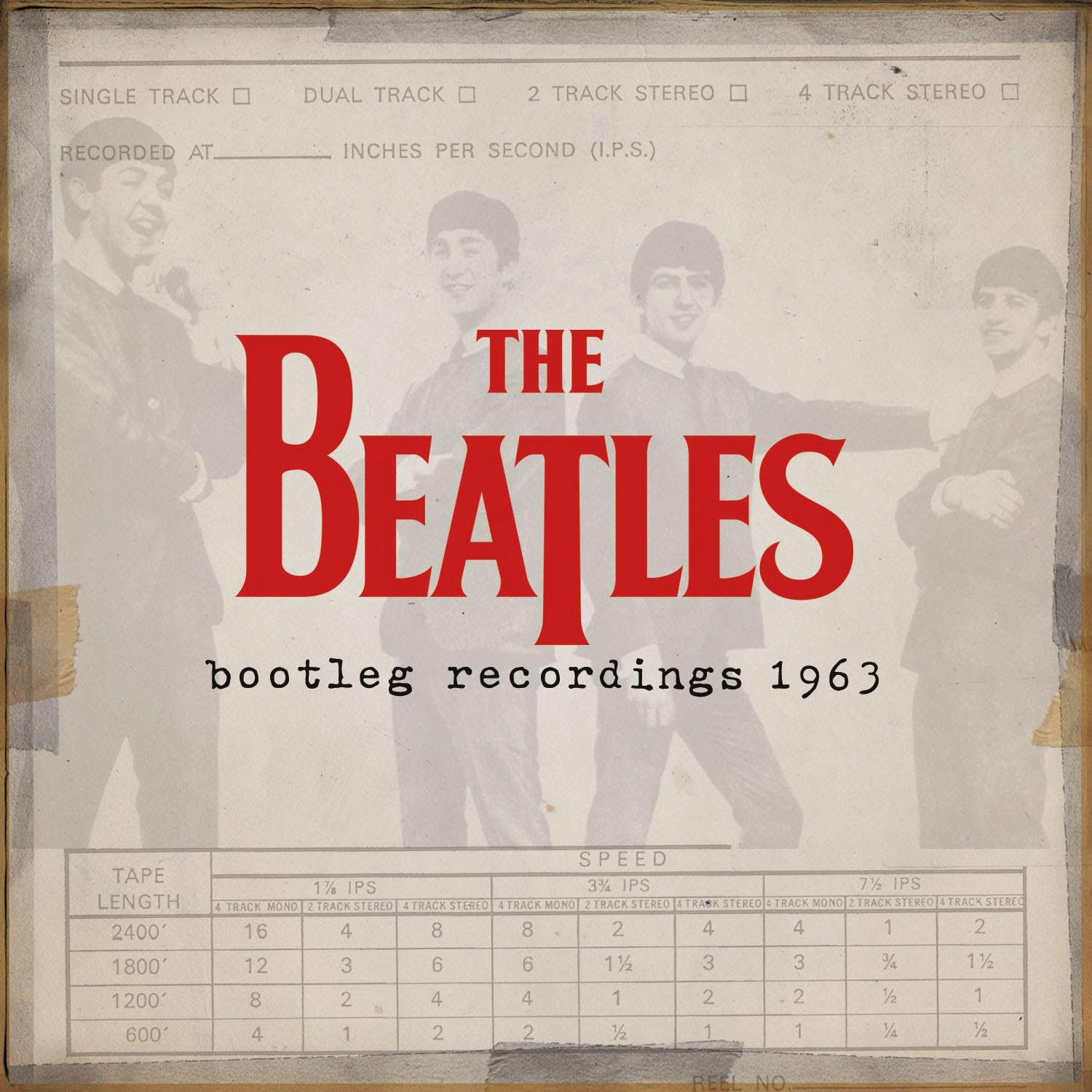 On December 17th, 2013, iTunes released a 59 track compilation album they called "Bootleg Recordings 1963" only available on their downloading platform, studio takes 1, 2 and 5 of "From Me To You" from the group's March 5th, 1963 EMI recording session included therein. Interestingly, their May 25th, 1963 BBC performance of the song for the program "Saturday Club" is included here too. The purpose of this release was to extend the copyright of these recordings under European Union law from 50 years (which would have expired at the end of 2013) to 70 years (until 2033), this being considered an official release. This compilation album was only available in the US on that date to those in the know for a number of hours for $39.99 in its entirety or to be purchased as individual tracks, but was later made available for purchase as well. On December 17th, 2013, iTunes released a 59 track compilation album they called "Bootleg Recordings 1963" only available on their downloading platform, studio takes 1, 2 and 5 of "From Me To You" from the group's March 5th, 1963 EMI recording session included therein. Interestingly, their May 25th, 1963 BBC performance of the song for the program "Saturday Club" is included here too. The purpose of this release was to extend the copyright of these recordings under European Union law from 50 years (which would have expired at the end of 2013) to 70 years (until 2033), this being considered an official release. This compilation album was only available in the US on that date to those in the know for a number of hours for $39.99 in its entirety or to be purchased as individual tracks, but was later made available for purchase as well.
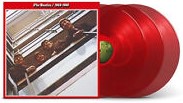 A 50th Anniversay edition of the compilation album "The Beatles / 1962 - 1966" (aka "The Red Album") was released on November 10th, 2023, the new stereo mix of the song "From Me To You," as detailed above, being included here. This expanded release included 12 additional songs for a total of 38 tracks, and was made available as a double CD and as a triple vinyl release on both black and red vinyl. A 50th Anniversay edition of the compilation album "The Beatles / 1962 - 1966" (aka "The Red Album") was released on November 10th, 2023, the new stereo mix of the song "From Me To You," as detailed above, being included here. This expanded release included 12 additional songs for a total of 38 tracks, and was made available as a double CD and as a triple vinyl release on both black and red vinyl.
Live Performances
The Beatles worked very hard at promoting their third single. "From Me To You" was an intrinsic part of their stage, radio and television performances throughout the entire year of 1963. The first known performance of the song was the recording on April 1st for the BBC radio show "Side By Side," as detailed above, which aired just 11 days after the British single was released.
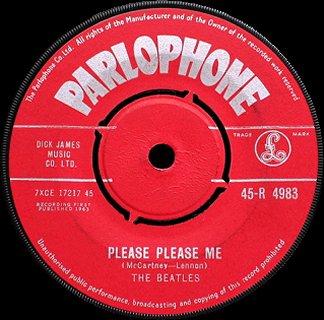 Three days later, on April 4th, 1963, the band played a unique hour-long concert at the Roxburgh Hall, Stowe School in Stowe, Bucks, as detailed above. On the following day, April 5th, 1963, The Beatles performed the song at a private live show at EMI House in central London before record company executives, this being in honor of the group receiving a silver disc for the "Please Please Me" single. Three days later, on April 4th, 1963, the band played a unique hour-long concert at the Roxburgh Hall, Stowe School in Stowe, Bucks, as detailed above. On the following day, April 5th, 1963, The Beatles performed the song at a private live show at EMI House in central London before record company executives, this being in honor of the group receiving a silver disc for the "Please Please Me" single.
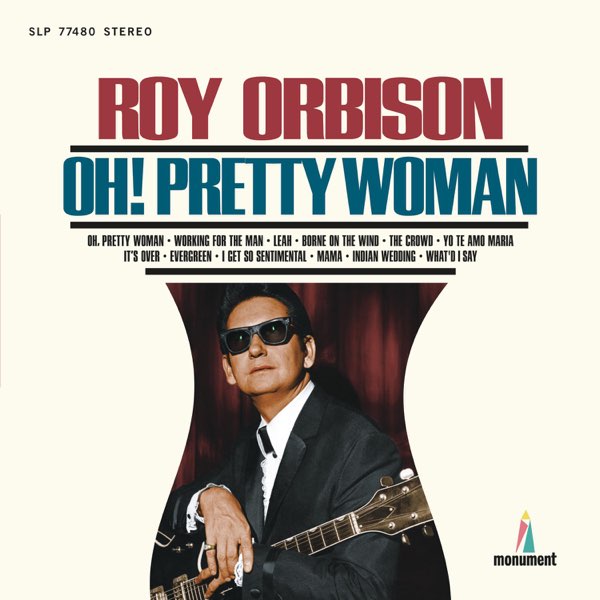 Among the other noteworthy live performances of "From Me To You" in 1963 was at the Royal Albert Hall in London on April 18th, their third national tour with Roy Orbison from May 18th through June 9th, their six day residency at the Gaumont Cinema in Bournemouth, Hants, England from August 19th through 24th, their London Palladium performance on October 13th, their tour of Sweden from October 24th through 29th, "The Beatles Autumn Tour" from November 1st through December 13th, and the Royal Command Performance at the Prince of Wales Theatre on November 4th. The beginnings of 1964 still saw The Beatles featuring the song live, such as in their Paris performances at the Olympia Theatre from January 16th through February 4th, and their first US concerts at the Washington Coliseum (February 11th) and Carnegie Hall (February 12th). Among the other noteworthy live performances of "From Me To You" in 1963 was at the Royal Albert Hall in London on April 18th, their third national tour with Roy Orbison from May 18th through June 9th, their six day residency at the Gaumont Cinema in Bournemouth, Hants, England from August 19th through 24th, their London Palladium performance on October 13th, their tour of Sweden from October 24th through 29th, "The Beatles Autumn Tour" from November 1st through December 13th, and the Royal Command Performance at the Prince of Wales Theatre on November 4th. The beginnings of 1964 still saw The Beatles featuring the song live, such as in their Paris performances at the Olympia Theatre from January 16th through February 4th, and their first US concerts at the Washington Coliseum (February 11th) and Carnegie Hall (February 12th).
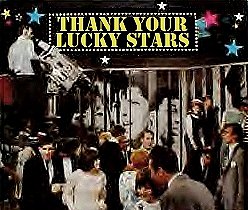 There was a grand total of 13 TV performances of the song by the group as well. In 1963, the first was a live lip-synced performance on the show "Tuesday Rendezvous" on April 9th, then the April 13th filming for "The 625 Show," which aired on April 16th, then "Thank Your Lucky Stars," which was another lip-synced performance on April 14th that aired on April 20th, then another live mimed performance for "Scene At 6:30" on April 16th. The group lip-synced another performance of the song for "Thank Your Lucky Stars" on May 12th (broadcast on May 18th), then the live show "Pops And Lenny" on May 16th, followed by a mimed performance for "Lucky Stars (Summer Spin)" on June 23rd (aired June 29th), then yet another installment of "Thank Your Lucky Stars" on September 1st, which aired on September 7th (also mimed). There was a grand total of 13 TV performances of the song by the group as well. In 1963, the first was a live lip-synced performance on the show "Tuesday Rendezvous" on April 9th, then the April 13th filming for "The 625 Show," which aired on April 16th, then "Thank Your Lucky Stars," which was another lip-synced performance on April 14th that aired on April 20th, then another live mimed performance for "Scene At 6:30" on April 16th. The group lip-synced another performance of the song for "Thank Your Lucky Stars" on May 12th (broadcast on May 18th), then the live show "Pops And Lenny" on May 16th, followed by a mimed performance for "Lucky Stars (Summer Spin)" on June 23rd (aired June 29th), then yet another installment of "Thank Your Lucky Stars" on September 1st, which aired on September 7th (also mimed).
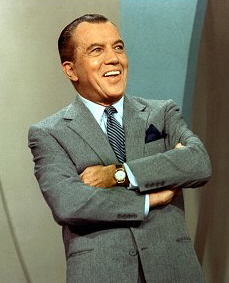 "Val Parnell's Sunday Night At The London Palladium" was next, which was broadcast live on October 13th, then the famous "Royal Command Performance," which was filmed on November 4th and aired on November 10th. Following this was a show entitled "It's The Beatles," which was broadcast on December 7th, featuring a short version of the song at the beginning of their set and a reprise of it at the conclusion. Then came their second broadcast "Ed Sullivan Show," which aired live in the US on February 16th, 1964. The last TV performance of "From Me To You," this also being the last known performance of the song, was in the medley the group played on their British special "Around The Beatles," which aired in Britain on May 6th and June 8th, and in America on November 15th, 1964. "Val Parnell's Sunday Night At The London Palladium" was next, which was broadcast live on October 13th, then the famous "Royal Command Performance," which was filmed on November 4th and aired on November 10th. Following this was a show entitled "It's The Beatles," which was broadcast on December 7th, featuring a short version of the song at the beginning of their set and a reprise of it at the conclusion. Then came their second broadcast "Ed Sullivan Show," which aired live in the US on February 16th, 1964. The last TV performance of "From Me To You," this also being the last known performance of the song, was in the medley the group played on their British special "Around The Beatles," which aired in Britain on May 6th and June 8th, and in America on November 15th, 1964.
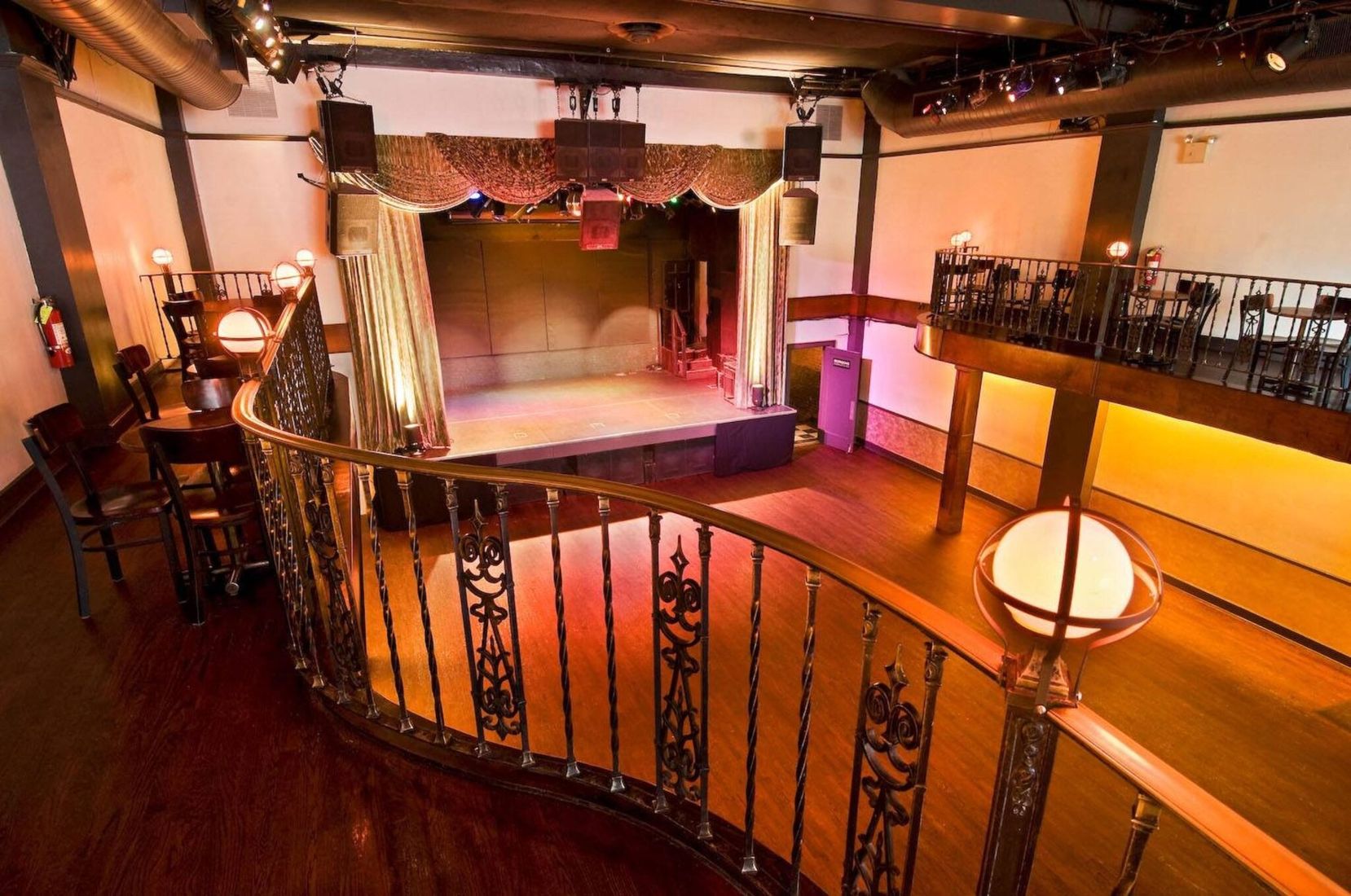 Paul decided to include "From Me To You" in his extensive set list during his "Freshen Up" tour, which began in Quebec City, Canada on September 17th, 2018 and came to a close in Los Angeles, California on July 13th, 2019. Interestingly, McCartney and his band played a surprise three night residency at the Bowery Ballroom in New York City on February 11th, 12th and 14th, 2025, this final night being Valentine's Day. The group played "From Me To You" at each of these performances at this 575-capacity Manhattan venue. Paul decided to include "From Me To You" in his extensive set list during his "Freshen Up" tour, which began in Quebec City, Canada on September 17th, 2018 and came to a close in Los Angeles, California on July 13th, 2019. Interestingly, McCartney and his band played a surprise three night residency at the Bowery Ballroom in New York City on February 11th, 12th and 14th, 2025, this final night being Valentine's Day. The group played "From Me To You" at each of these performances at this 575-capacity Manhattan venue.
Conclusion
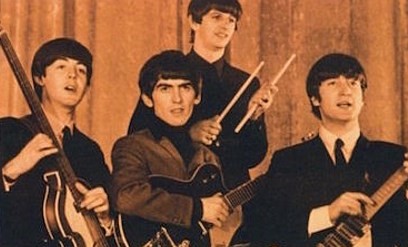 Paul McCartney has described "From Me To You" as "pivotal" in regard to its musical structure. This exact word could easily be applied in relation to the song's role in their overall British fame. It was primarily because of this song that the band assumed top billing on their 1963 Roy Orbison national tour midway through. It was primarily because of this song that they landed their own BBC radio series "Pop Go The Beatles." And it was this song that finally landed them in the top spot on all of the national British charts, not to mention for seven weeks straight. Paul McCartney has described "From Me To You" as "pivotal" in regard to its musical structure. This exact word could easily be applied in relation to the song's role in their overall British fame. It was primarily because of this song that the band assumed top billing on their 1963 Roy Orbison national tour midway through. It was primarily because of this song that they landed their own BBC radio series "Pop Go The Beatles." And it was this song that finally landed them in the top spot on all of the national British charts, not to mention for seven weeks straight.
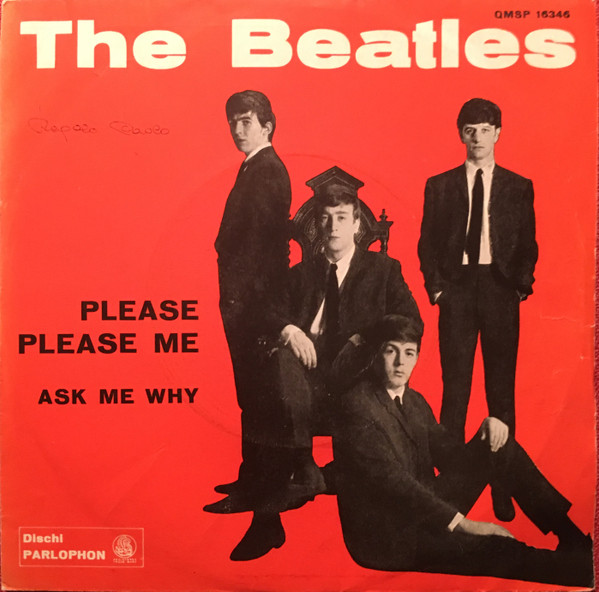 Since American audiences were somewhat less well acquainted with the song, it was dropped from their American appearances after the Ed Sullivan Show and, subsequently, from their live shows altogether. Nonetheless, "From Me To You" stands as testimony that, although America landed The Beatles and propelled them to worldwide notoriety, they will always be missing a "pivotal" piece of Lennon and McCartney's developing songwriting evolution. This step between "Please Please Me" and "She Loves You" in the creative growth of The Beatles will always be a uniquely British experience. Since American audiences were somewhat less well acquainted with the song, it was dropped from their American appearances after the Ed Sullivan Show and, subsequently, from their live shows altogether. Nonetheless, "From Me To You" stands as testimony that, although America landed The Beatles and propelled them to worldwide notoriety, they will always be missing a "pivotal" piece of Lennon and McCartney's developing songwriting evolution. This step between "Please Please Me" and "She Loves You" in the creative growth of The Beatles will always be a uniquely British experience.
Song Summary
"From Me To You"
Written by: Paul McCartney / John Lennon
-
Song Written: February 28, 1963
-
Song Recorded: March 5, 1963
-
First US Release Date: May 6, 1963
-
US Single Release: Vee Jay #VJ522
-
First US Album Release: Vee Jay #VJLP-1085 "Jolly What!"
-
Highest Chart Position: #41
-
British Album Release: Parlophone #PCS 7016 "A Collection Of Beatles Oldies"
-
Length: 1:48
-
Key: C major
-
Producer: George Martin
-
Engineers: Norman Smith, Richard Langham
Instrumentation (most likely):
- John Lennon - Lead Vocals, Rhythm Guitar (1958 Rickenbacker 325), Harmonica (Hohner Chromatic)
- Paul McCartney - Lead and Harmony Vocals, Bass Guitar (1961 Hofner 500/1)
- George Harrison - Lead Guitar (1957 Gretsch Duo Jet)
- Ringo Starr - Drums (1960 Premier 58/54 Mahogany)
Written and compiled by Dave Rybaczewski
|
IF YOU WOULD LIKE TO MAKE A DONATION TO KEEP THIS WEBSITE UP AND RUNNING, PLEASE CLICK BELOW!
|